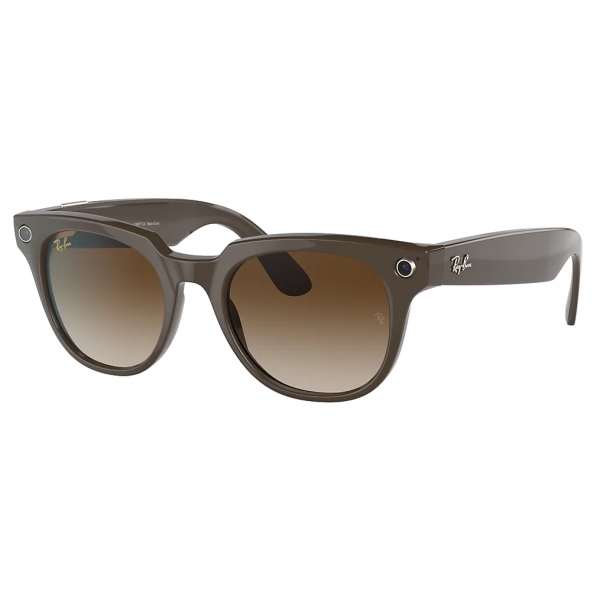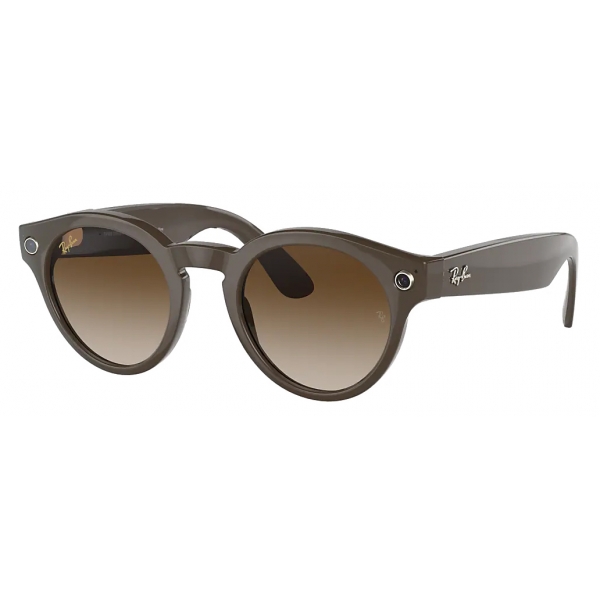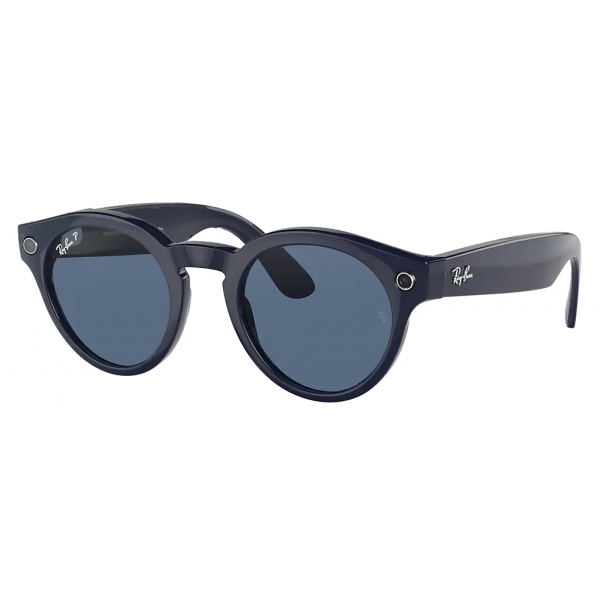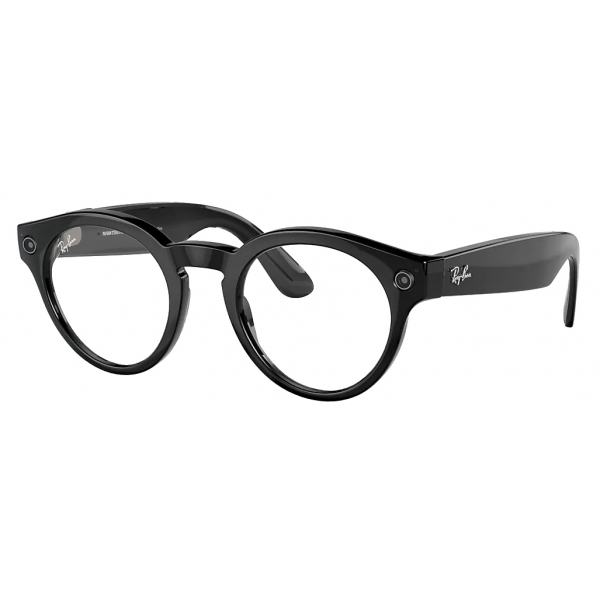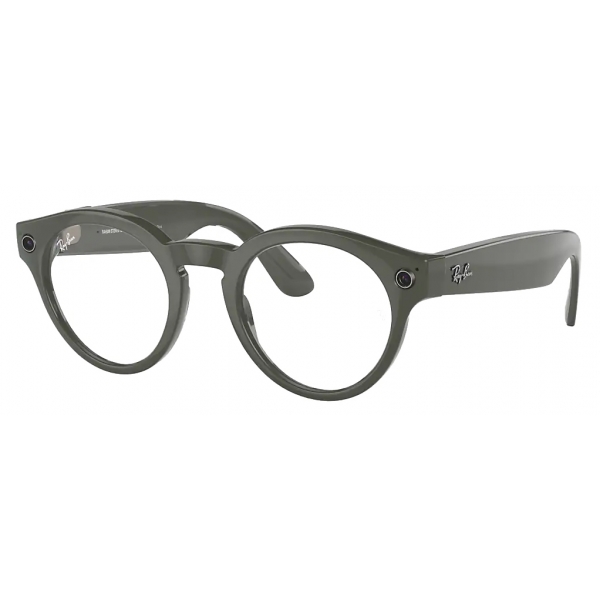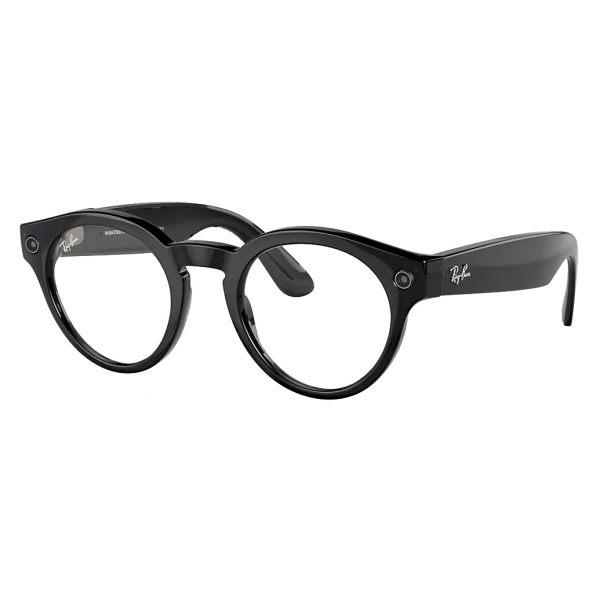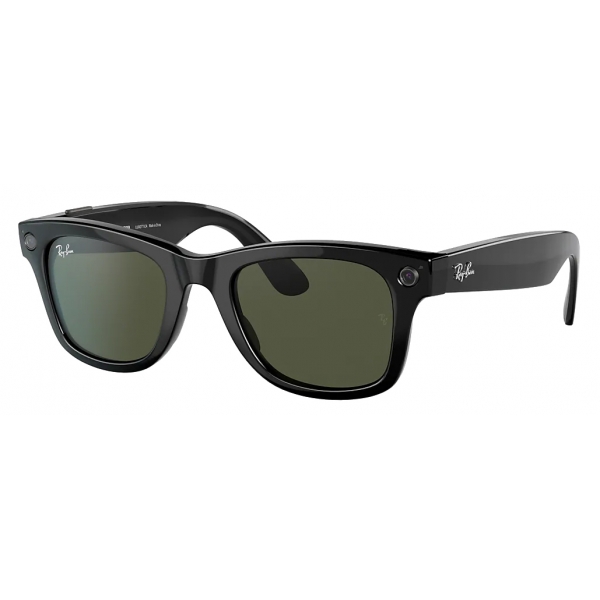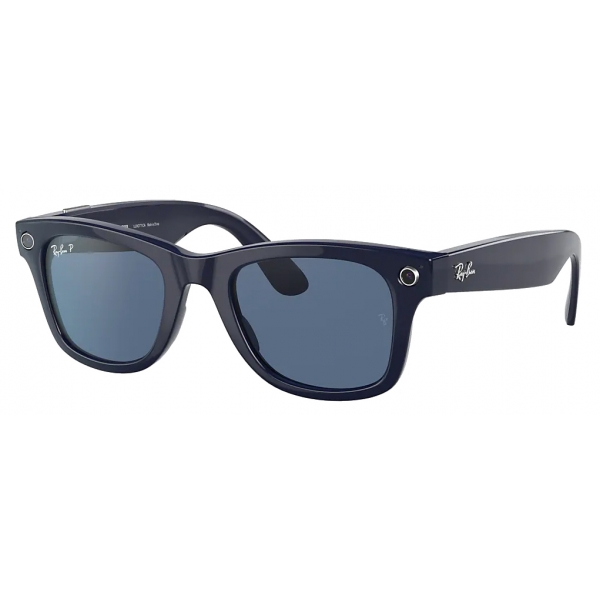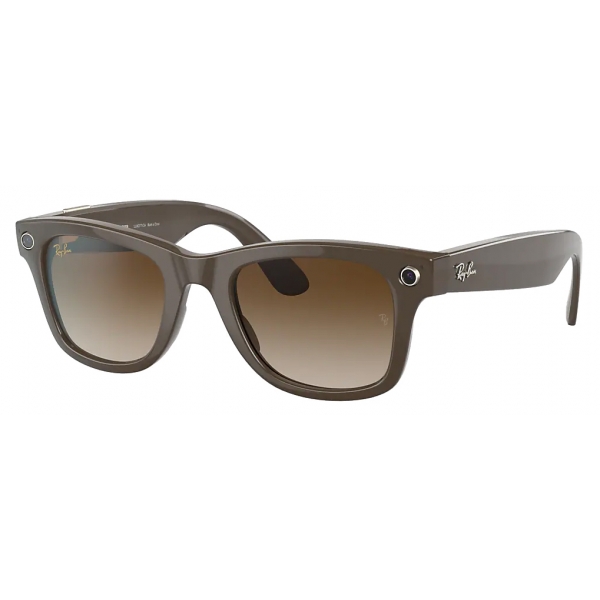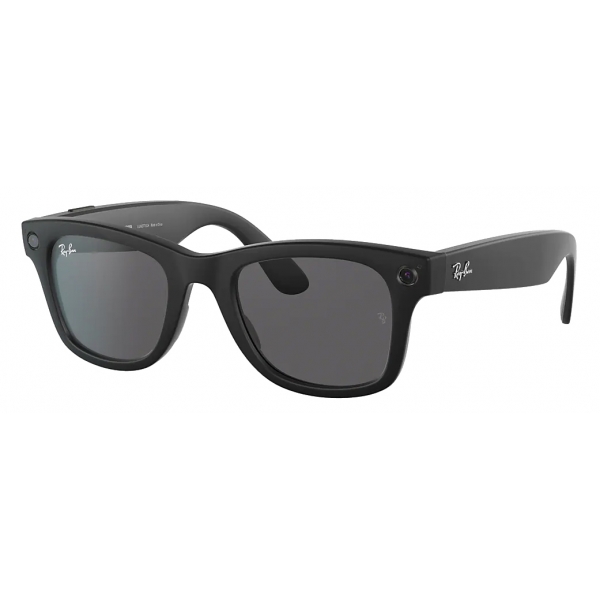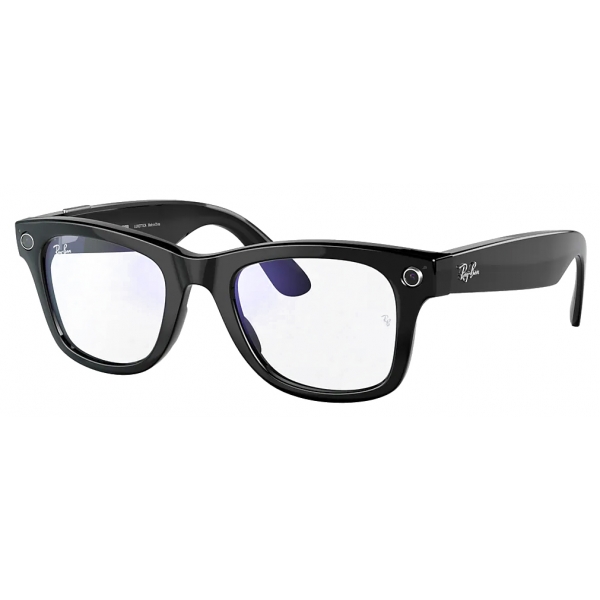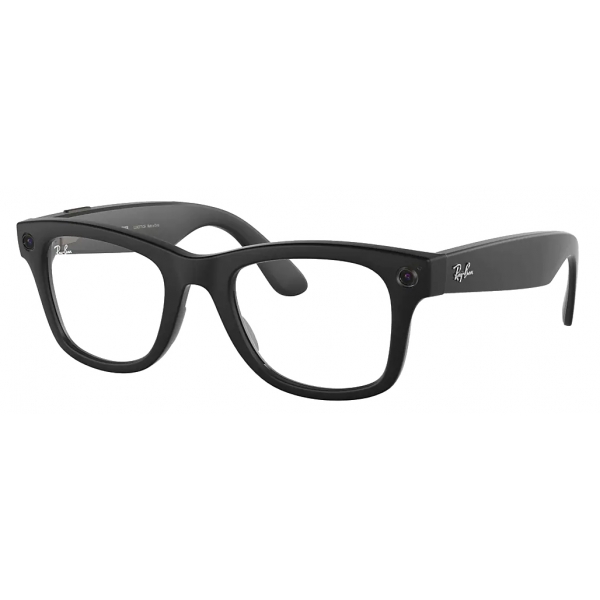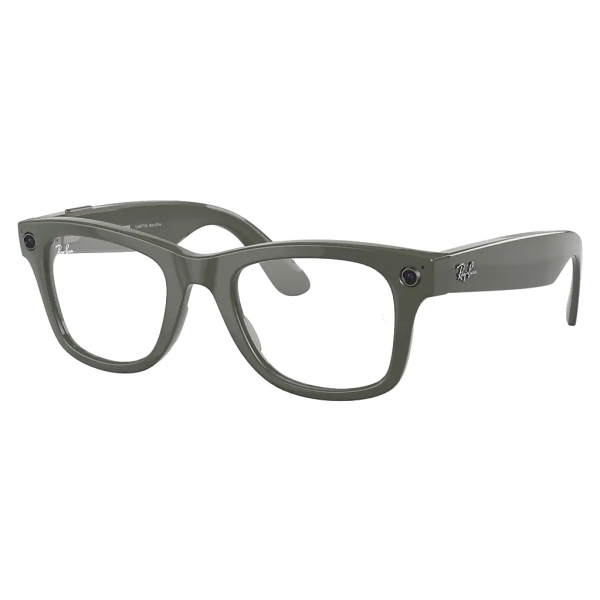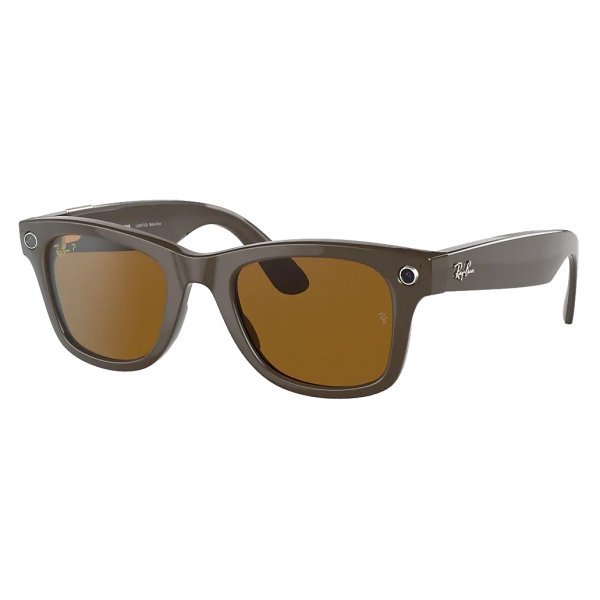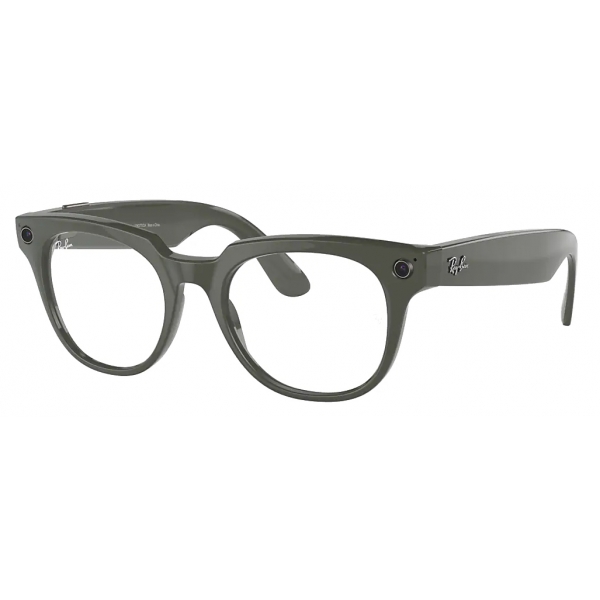No products
Categories
- Fashion Accessories
- Clothing
- Beauty & Lifestyle
-
Hi-Tech & Lifestyle
- Gaming
-
Case
- iPhone 11 Pro
- iPhone 11 Pro Max
- iPhone 11
- iPhone X / XS
- iPhone XS Max
- Samsung S10 / S10+ / S10e
- Huawei P30 / P30 Pro / P30 Lite
- Huawei P20 / P20 Pro / P20 Lite
- iPhone XR
- Samsung S9
- Samsung S9+
- iPhone 8 / 7
- iPhone 8 Plus / 7 Plus
- Samsung S8
- Samsung S8+
- Samsung S7
- Samsung S7 Edge
- iPhone 6 / 6 s
- iPhone 6 Plus / 6 s Plus
- iPhone 5 / SE
- Skin
- Audio
- Smart Home
- Drones & Hoverboard
- Photo & Video
- Desk Supplies
- Accessories
- Games
- Beverages
- Food
- Home
- Jewelry
- Luxury
- Travel
- Art
- Footwear
- Vintage Fashion
- Restaurants
- Sport
- Animals
- Gift Ideas
- Kidswear
Extra
Ray-Ban
Never Hide

Ray-Ban - The History of The Top-Selling Eyewear Brand Worldwide
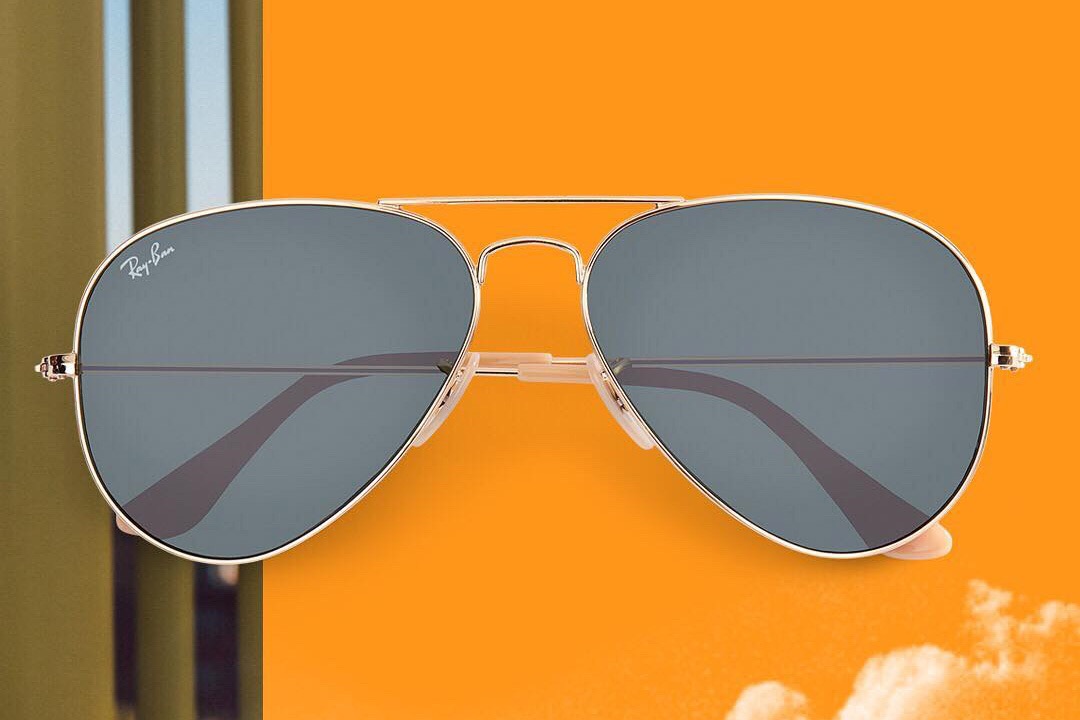
Throughout its seven-and-a-half decades, Ray-Ban has been instrumental in pushing boundaries in music and the arts, forging the rise of celebrity culture, and creating the power of the rock and movie stars to influence fashion. From James Dean to Audrey Hepburn to Michael Jackson, Ray-Ban has proven indispensable for cultural icons who don’t want to be seen - but definitely want to be noticed. Ray-Ban has left an indelible mark on culture history.

Anni ‘30 - All About Aviation

As new airplanes allowed people to fly higher and farther, many US Air Force pilots were reporting that the glare from the sun was giving them headaches and altitude sickness. A new kind of glasses was introduced with green lenses that could cut out the glare without obscuring vision, and the Ray-Ban brand was born.

This new anti-glare eyewear went on sale to the public in 1937. The original glasses featured a plastic frame with the now classic Aviator shape. The sunglasses were remodeled with a metal frame the following year and rebranded as the Ray-Ban Aviator.
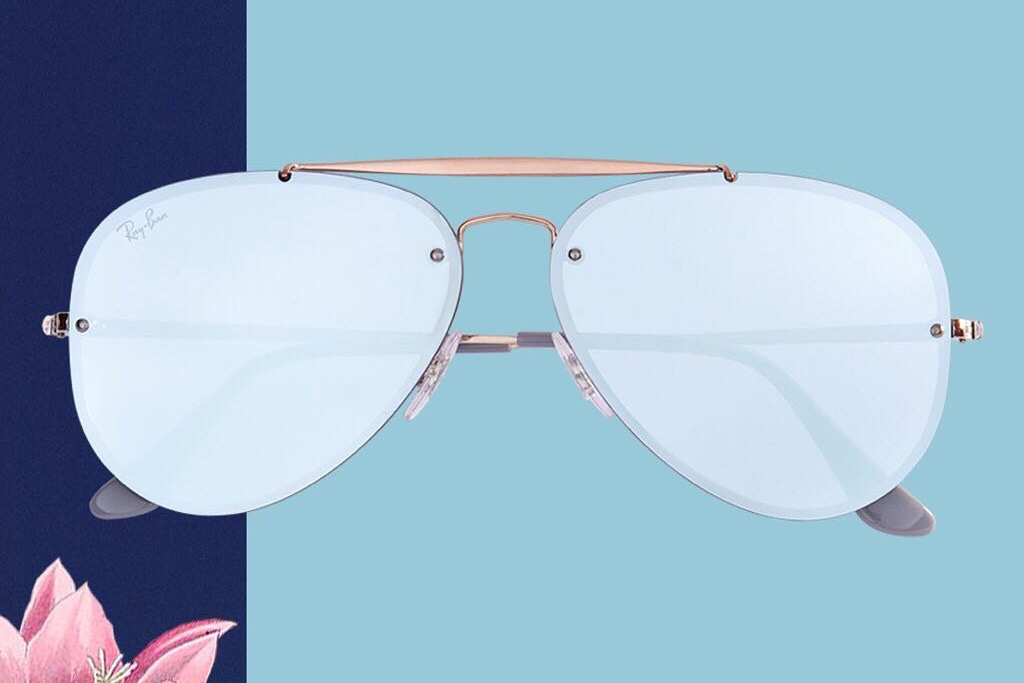
It wasn’t long before the popularity of Ray-Ban spread from pilots to anyone with an outdoor lifestyle. In 1938, the Ray-Ban Shooter was launched in both the green lens and the pale yellow Kalichrome lens, which sharpens detail and minimizes haze by filtering out blue light, making it ideal for misty conditions. The “cigarette-holder” middle circle, designed to free the hands of the shooter, is the signature of this icon.

Ray-Ban continued to expand its catalog - and customer base - with the launch of the Ray-Ban Outdoorsman model the following year. Originally called “Skeet Glass” and designed for specific groups such as hunting, shooting and fishing enthusiasts, the top bar and temple end pieces have been covered through years with different materials, including nacre and calf leather.
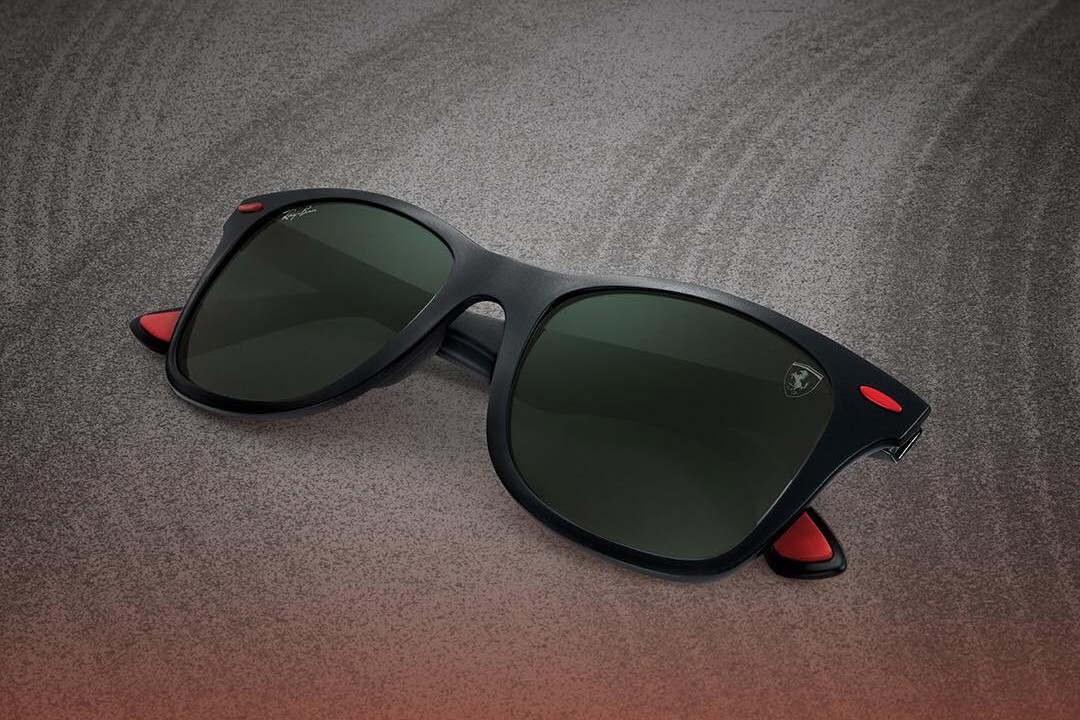
Anni ‘40 - Aviation and More
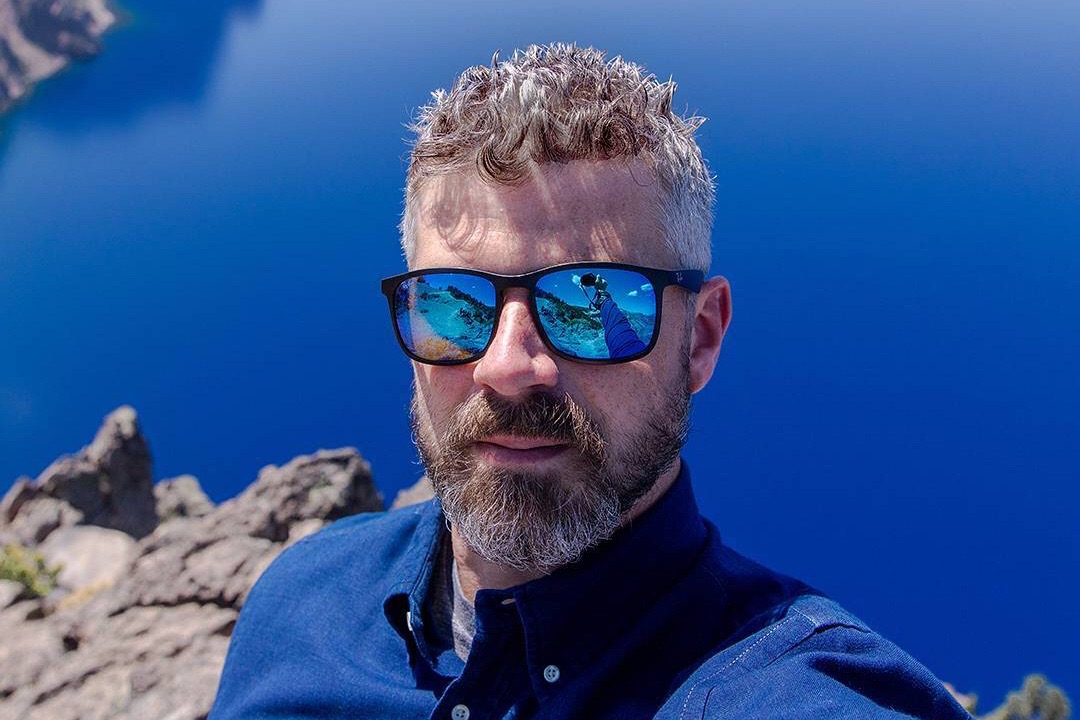
World War II saw American Air Force pilots continue to rely on Ray-Ban. Research and development resulted in innovations such as the gradient mirror lens, which featured a special coating on the upper part of the lens for enhanced protection, but an uncoated lower lens for a clear view of the plane’s instrument panel. Though designed for military use, these products and innovations resonated with civilians who wanted to enjoy the same high-performance tools the pros were using.

Military influence on fashion was undeniable: Army and Navy regulation t-shirts were a staple of 1940s fashion, and civilians eager to emulate pilots sported cool new sunglasses. Ray-Ban had jumped decisively from military function to pop culture fashion—without losing any of their trademark effectiveness.

Anni ‘50 - Hollywood Glam
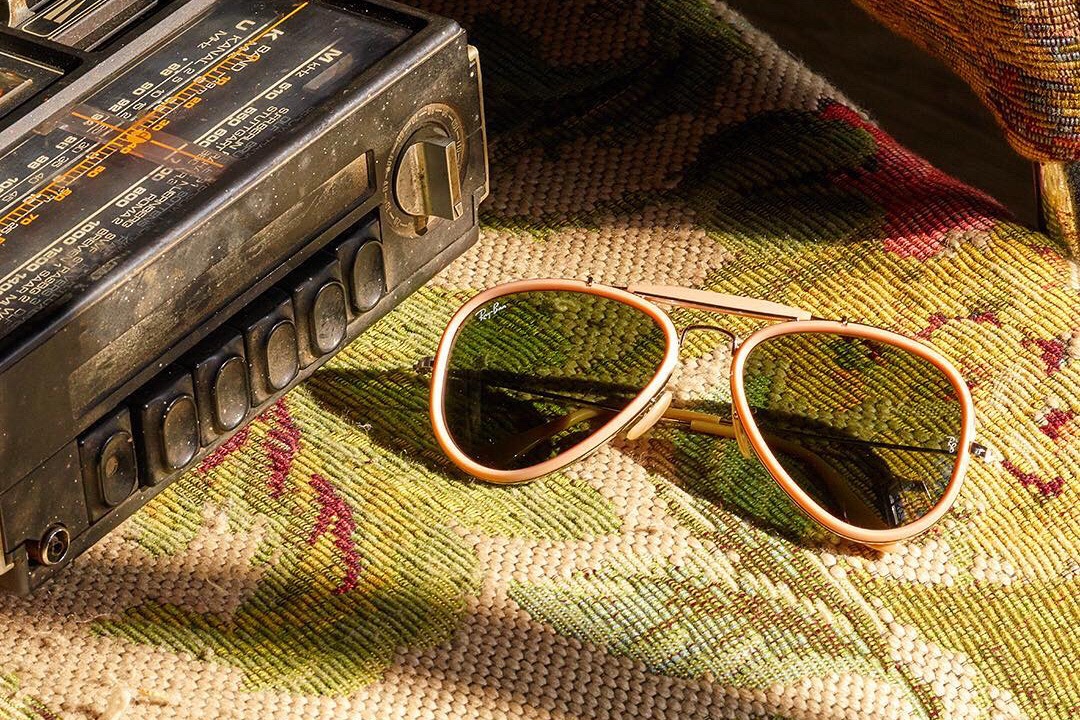
In the wake of WWII, Hollywood was having an increasingly powerful impact on what people wore. The Ray-Ban Wayfarer model was launched in 1952, and once they had been seen on screen legends such as James Dean in 1955’s Rebel Without a Cause and later on Audrey Hepburn in 1961’s Breakfast at Tiffany’s, Ray-Ban Wayfarer became one of the most instantly recognizable fashion accessories ever.

All the while, Ray-Ban continued to innovate. Introduced in 1953, Ray-Ban Signet sunglasses feature an eye catching gold or silver frame with horizontal bands at the nose bridge, front corners, and ear stems. The original Ray-Ban Signet would spawn multiple updates, including the 2011 Ray-Ban Johnny Marr’s Limited Edition customized by the guitarist for the legendary British indie rock band The Smiths.

Further innovations of the 1950s included the G-15 gray lens (1953) - a neutral gray lens giving true color vision and exceptionally comfortable protection even in most dazzling glare - and a fourth metal frame style, the Ray-Ban Caravan (1957), a squarer version of the Ray-Ban Aviator later worn by Robert De Niro in 1976’s Taxi Driver. A dedicated women’s range was introduced in 1958, including frames in different colors with decorative flourishes that kept pace with contemporary fashion.
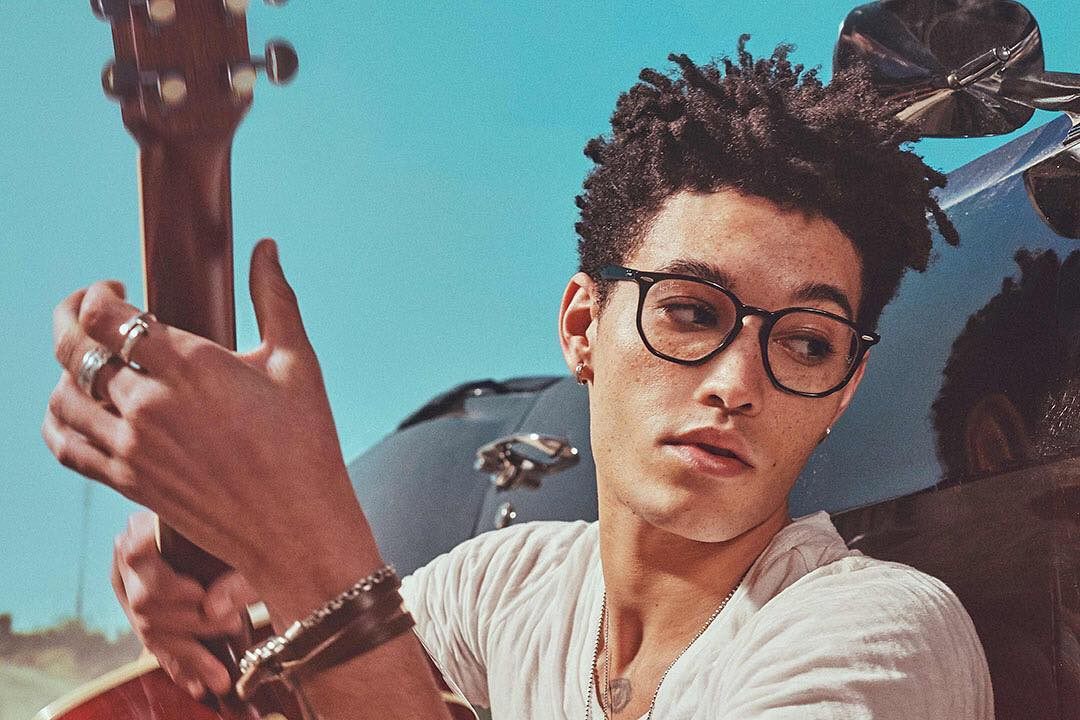
Anni ‘60 - Revolution and Change

Embracing the 1960s zeitgeist of change and revolution, Ray-Ban adapted right along with the changing times. From roughly thirty models at the beginning of the decade, the catalog had expanded to fifty by 1969, including styles for men, women and children.
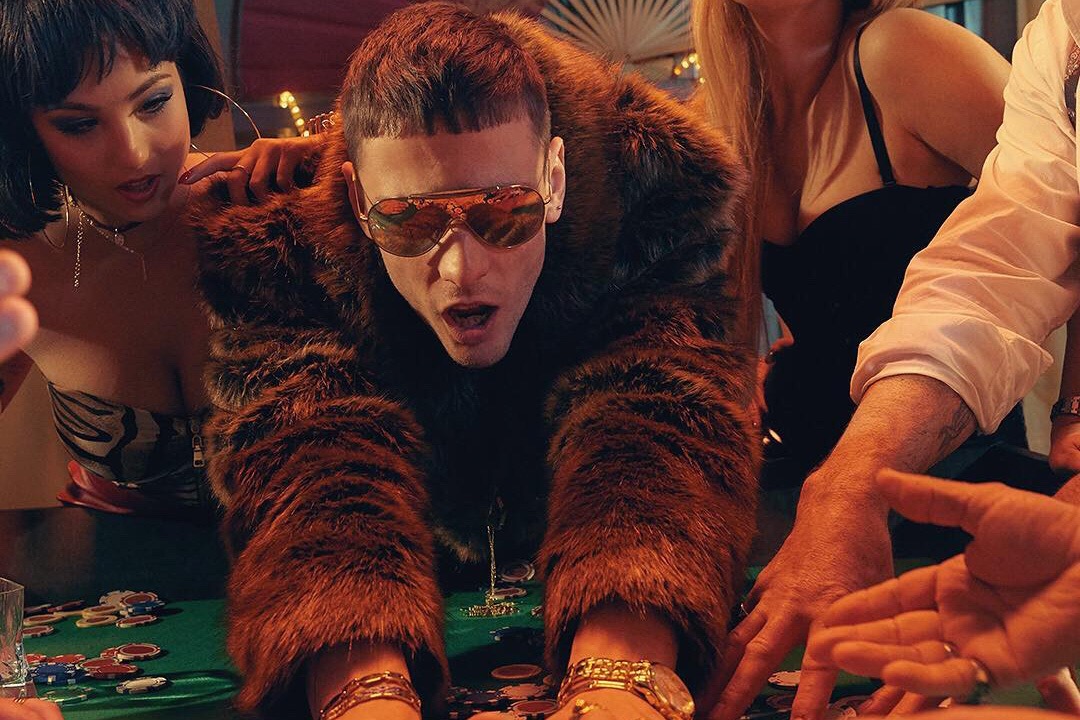
Ray-Ban had become the world’s leader in eyewear through its reputation for style and quality, from the glasses themselves to the specially made leather and vinyl cases that protected them when not in use.
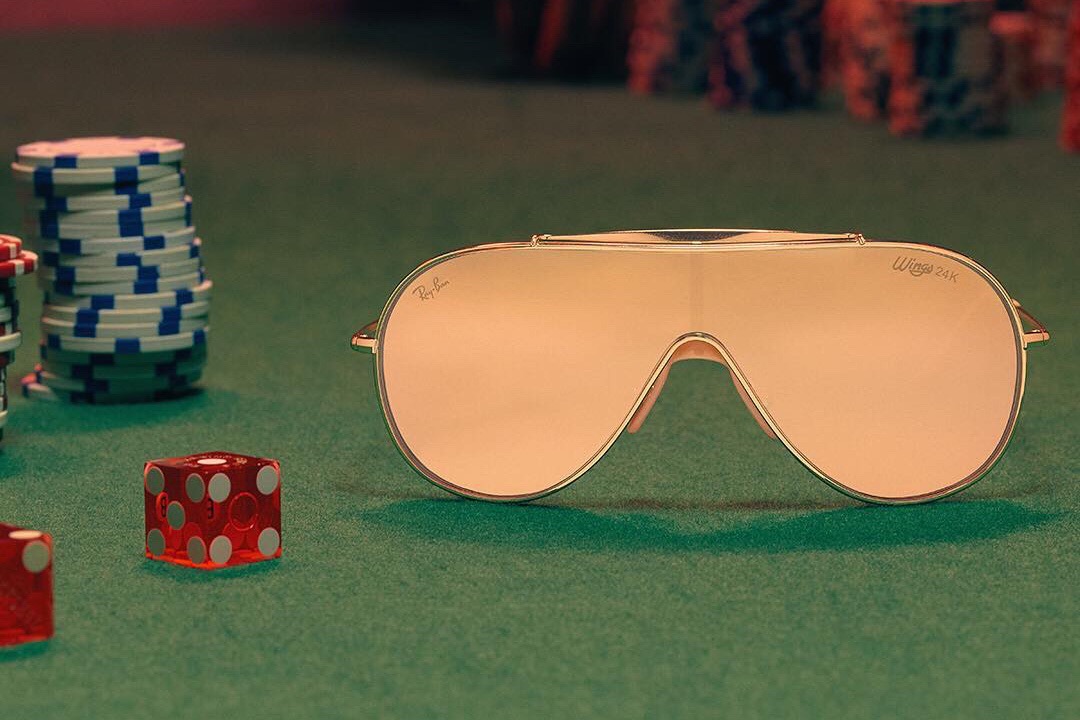
Ray-Ban continued to create new styles and Hollywood stars continued to wear them. The Ray-Ban Olympian I and II were introduced in 1965 and worn by Peter Fonda in Easy Rider in 1969. The frames feature a gently curving metal bridge and rounded rectangle lenses, reinterpreting a classic with a sleek and elegant twist.

Ray-Ban Balorama sunglasses emerged in 1968 and were famously worn by Clint Eastwood in Dirty Harry in 1971. Meanwhile, Bob Dylan was rarely seen without his Ray-Ban Wayfarer, the dark lenses adding to his enigmatic non-conformist appeal.

Additional 1960s debuts were the angular, masculine Ray-Ban Meteor and the cat eye-shaped Ray-Ban Laramie.

Anni ‘70 - Sporting Chance

Disco was king in the 1970s, and disco meant dressing to impress, which often included cool shades-even indoors. By now the eyewear market was becoming more sophisticated and had developed in two distinct directions: sportswear necessity and fashion accessory.

Ray-Ban launched two models, the Ray-Ban Vagabond and Ray-Ban Stateside, each with plastic frames and two types of lenses: the G-31 mirror lens and the standard G-15 lens. Re-introduced in 2010, the Ray-Ban Vagabond was updated with slightly teardrop-shaped lenses for a cool, retro look.
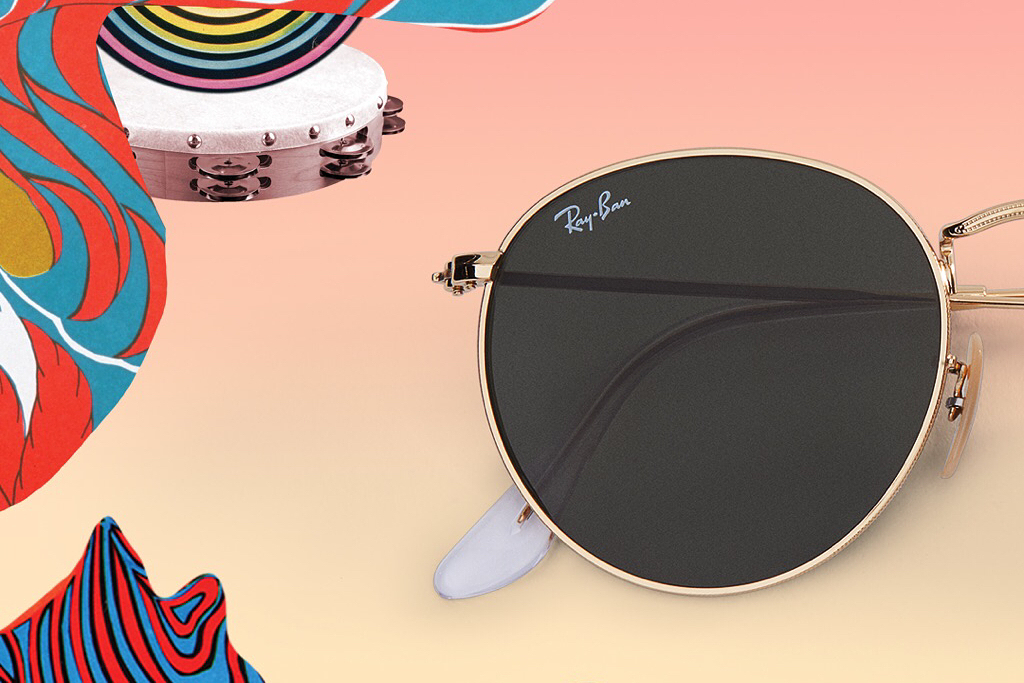
The 1970s saw further product expansion and technical innovation: mountaineering glasses with mirrored lenses and leather side shields were developed to reflect glare and protect the eyes from sun and wind.

Ray-Ban expanded its offerings to include prescription eyewear as well as sunglasses. In 1974, the photochromic Ambermatic lens was introduced, able to change color depending on light conditions. The Ambermatic highlighted outlines and shapes, even on snow, and darkened especially intense light, making it particularly good for winter sports.
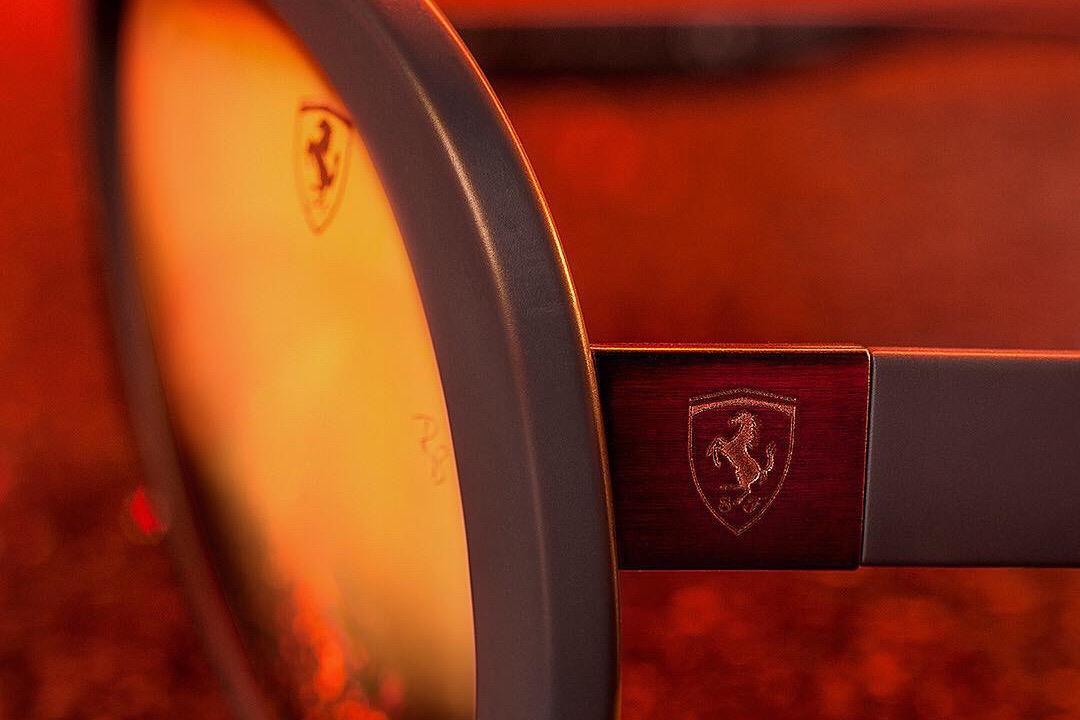
Anni ‘80 - Stage and Screen
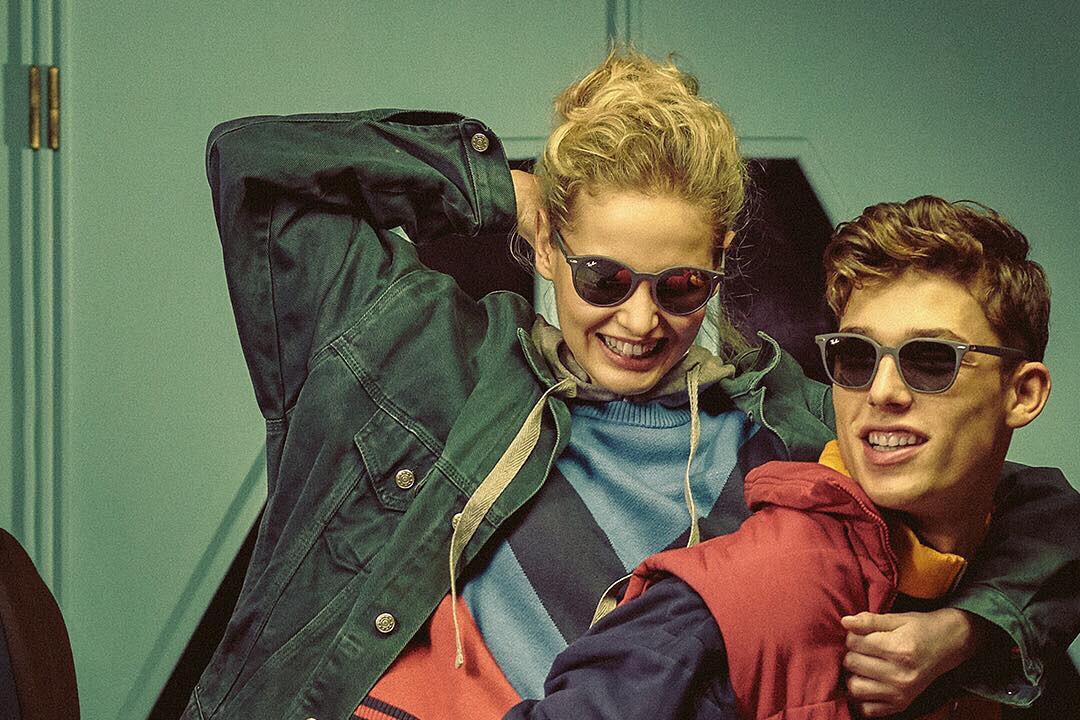
In the decade of arcade games, MTV, and the Brat Pack, Ray-Ban was one of the must-have brands. In the movies, there were leading roles for Ray-Ban Wayfarer in The Blues Brothers (1980) and Risky Business (1983). Top Gun (1986) took Ray-Ban Aviator back to their fighter pilot roots, boosting sales of the Ray-Ban original.
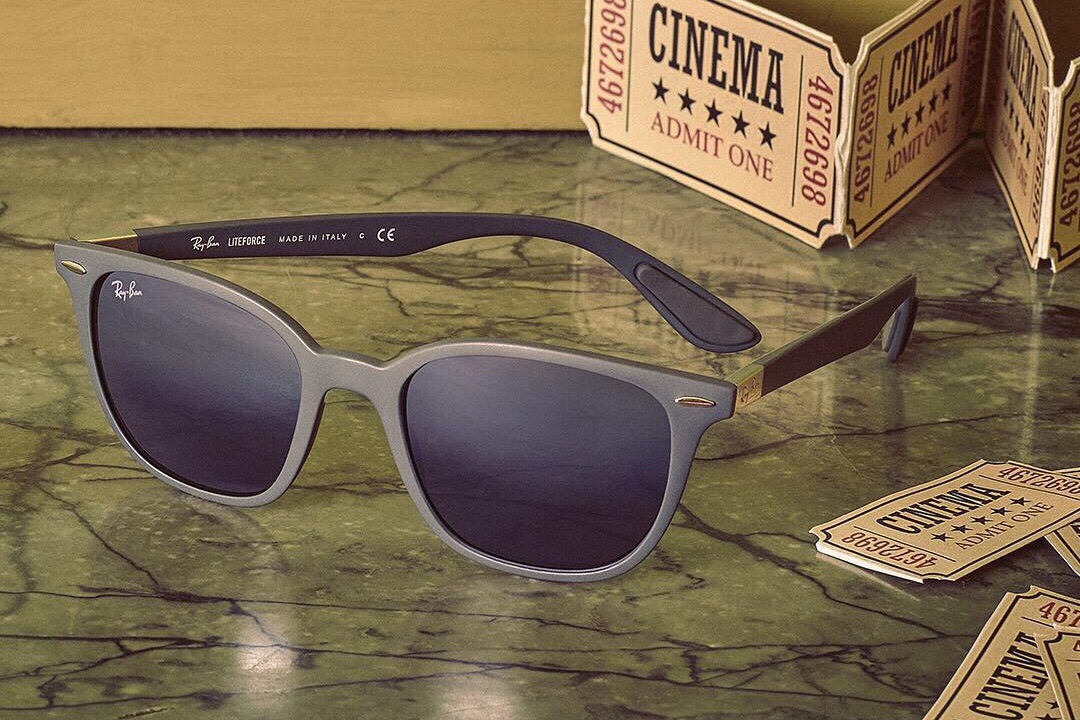
Michael Jackson established his signature look when he showed up at the 1984 Grammys in a pair of Ray-Ban Aviator. But it was Ray-Ban Wayfarer he chose for his epic Bad tour , which ran from 1987-89 and became the highest-attended tour in history.

Anni ‘90 - A New Era for Ray-Ban
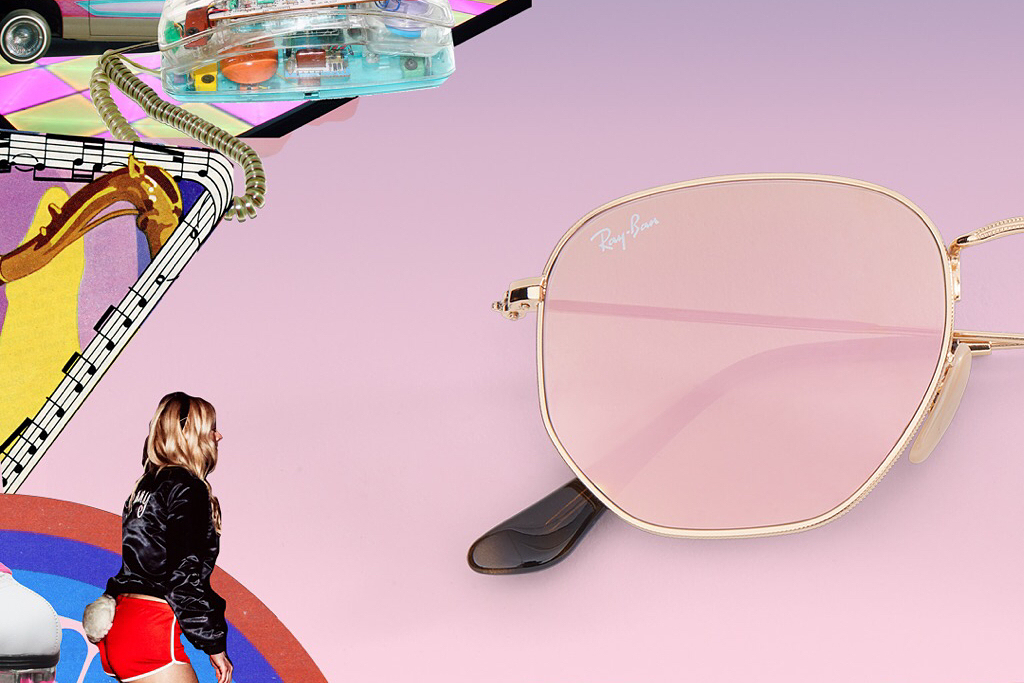
Ray-Ban continued to be a movie favorite in the 1990s: the Ray-Ban Clubmaster was worn by Denzel Washington in Malcolm X (1992) and Tim Roth in Reservoir Dogs (1992). 1997 saw Will Smith and Tommy Lee Jones wearing Ray-Ban Predator in Men in Black while Johnny Depp wore a pair of Ray-Ban Shooter in 1998’s Fear and Loathing in Las Vegas.

In 1999 Luxottica Group acquired the Bausch & Lomb frames business, including the brands Ray-Ban, Arnette, Killer-Loop Eyewear and REVO.

Anni 2000 - Culture and Communication

Major expansion of the Ray-Ban brand in 2003 included Ray-Ban Optical for prescription lenses and Ray-Ban Junior for children. Ray-Ban Optical draws on the brand’s pop culture heritage and meticulous craftsmanship to create contemporary eyewear infused with Ray-Ban lifestyle and quality. The first sunglass collection dedicated exclusively to kids aged 8 to 12 years, Ray-Ban Junior focuses on maximum eye protection while providing stylish, comfortable frames. In 2005, Ray-Ban Junior expanded to include models made entirely from titanium for a hypoallergenic and lightweight yet sturdy option.
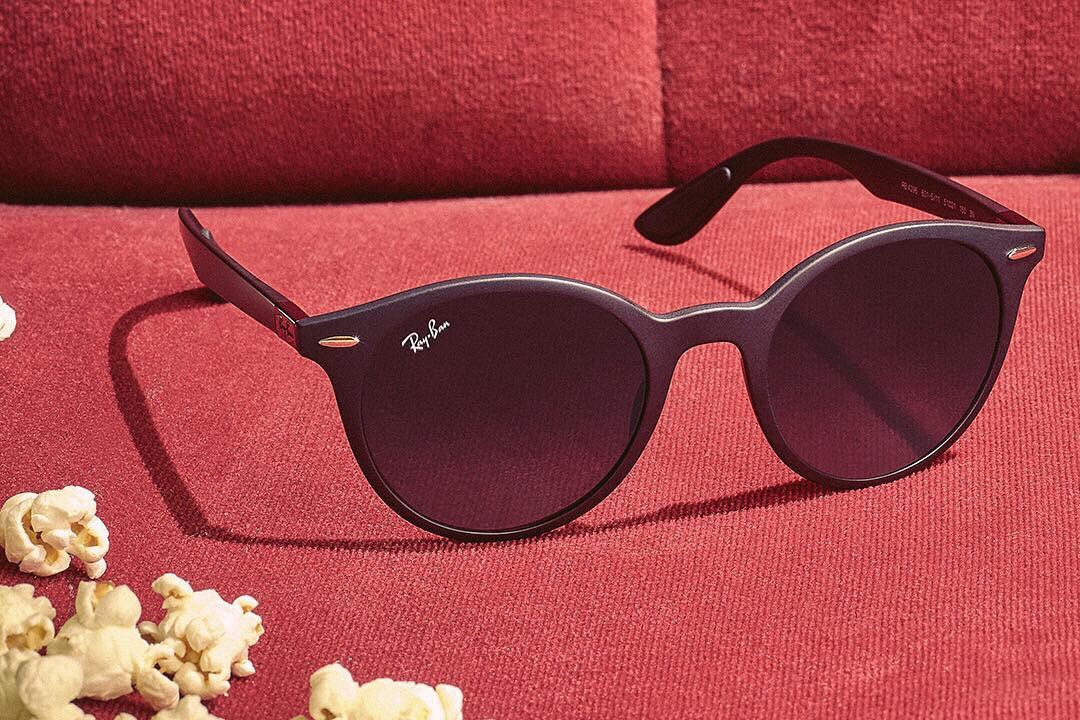
In 2006 came a complete overhaul of the Ray-Ban Wayfarer. Music photographer Mick Rock was commissioned to create a new series of photos, Ray-Ban Uncut: the Wayfarer Session, with indie rock music luminaries such as Peaches, James Murphy of LCD Soundsystem, Bobby Gillespie of Primal Scream and Johnny Marr of The Smiths reinterpreting the updated eyewear classic.

In 2007 Ray-Ban launched the NEVER HIDE campaign, an innovative global media plan highlighting Ray-Ban’s unique ability to place the Ray-Ban wearer at the center of attention with a timeless cool statement.

NEVER HIDE kicked off with an interactive project in NYC’s Times Square featuring 12 screens displaying images submitted by Ray-Ban wearers who wanted to express themselves honestly and spontaneously at “the crossroads of the world.” The images were then displayed in a gallery on Ray-Ban.com so that the NEVER HIDE experience would continue worldwide, showcasing Ray-Ban’s ability to celebrate the individual and the movement.

Ray-Ban Remasters was launched in 2008, an ongoing series of multimedia collaborations. The first project featured eight international musical acts, including The Kills, Black Kids, Ladyhawke, Ipso Facto and Paolo Nutini. Each recorded a cover of a song of their choice from the 1950s and 1960s - the decades that inspired the Ray-Ban Clubmaster - and performed it live at gigs in New York, Beijing and Milan.

Ray-Ban re-works its most iconic models in an explosion of fresh color for 2009 with Never Hide Colorize Communication Campaign. Ray-Ban Wayfarer Colorize Kit allowed fans to create their own unique pair of shades. The kit contained a pair of white Ray-Ban Wayfarer along with stencils and five markers specially designed for coloring the surface of the frames.

Additional recent Ray-Ban Wayfarer updates include models featuring designs printed on the interior of the frames, such as the NYC subway map and striking floral and striped patterns. The color palette is extended with Ray-Ban Rare Prints series features trends in pop culture, cinema, and advertising, and is available in two themes: “Comics” and “Button Pins.”

Ray-Ban re-affirms its leadership in innovation and technology by giving birth to a new segment within the collection. The Ray-Ban Tech Carbon Fiber Collection incorporates the extraordinarily sturdy yet extremely lightweight quality of carbon fiber.
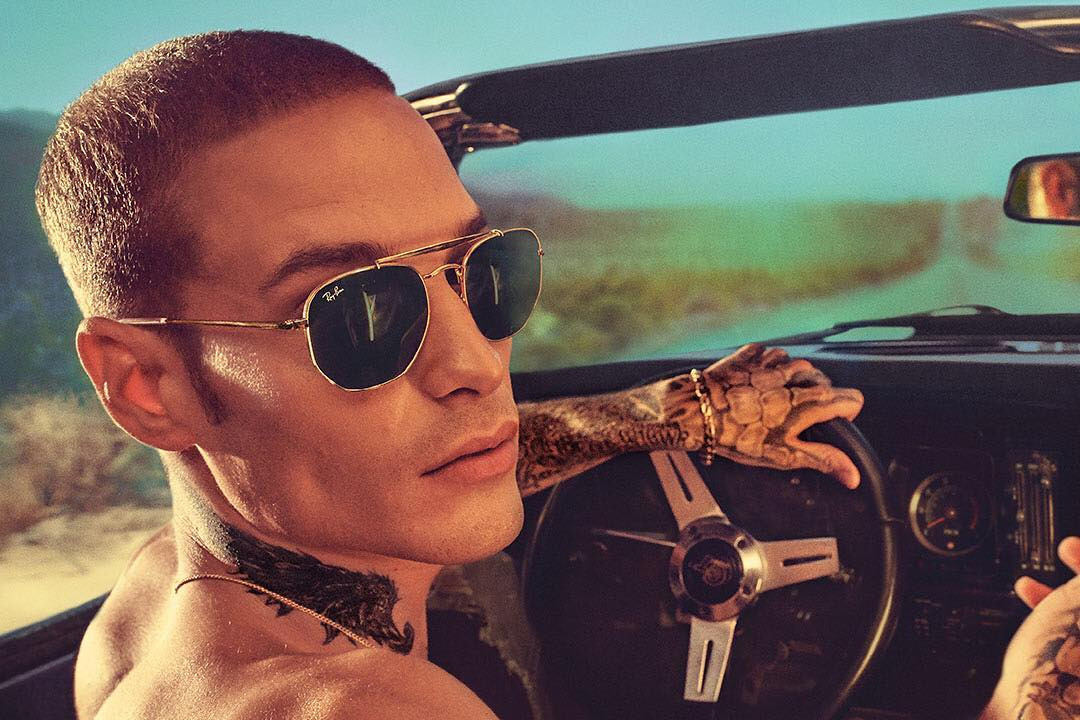
The collection features wraparound temples composed of seven carbon fiber layers, resulting in extremely lightweight, flexible, and exceptionally durable frames. The P3 (polycarbonate) and P3PLUS (crystal) lenses guarantee exceptional polarization and more vivid and high-definition colors. An anti-reflective coating is also applied to eliminate glare and provide full protection from harmful UV rays.
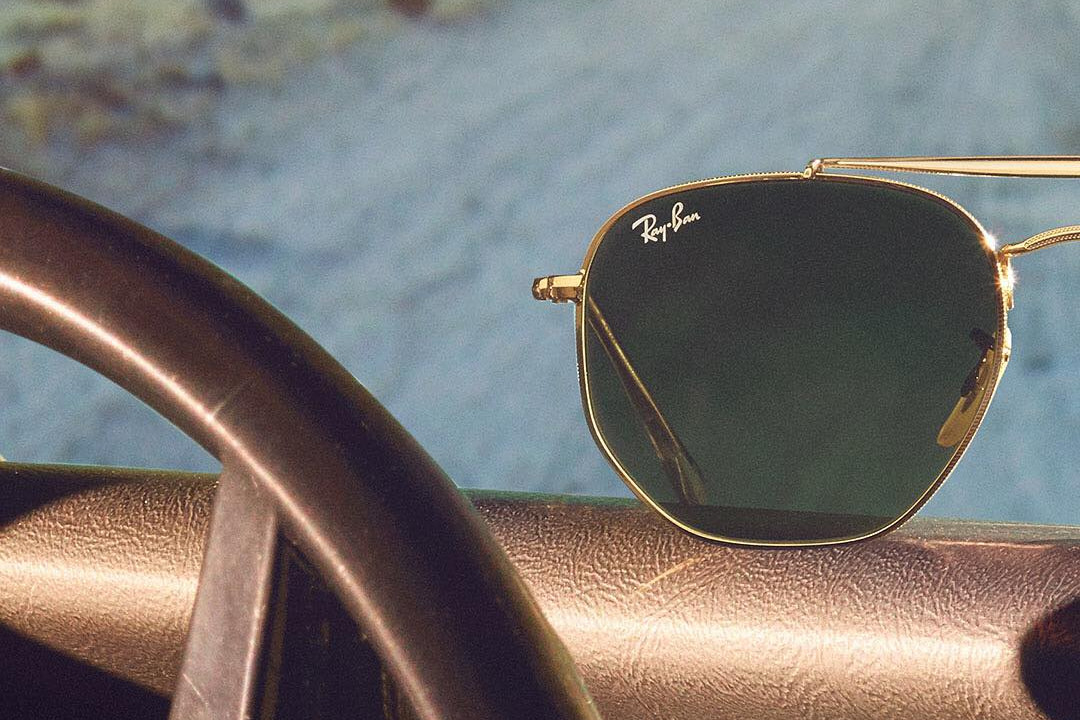
Anni 2010 - Updates, Advances and Celebrating 75 Years

In 2010, it was the Ray-Ban Aviator’s turn back in the spotlight. Renowned rock photographer Kevin Cummins shot music icons past and present - including The Virgins, The Big Pink, We Are Scientists and Iggy Pop - wearing various models from within the Ray-Ban Aviator family.
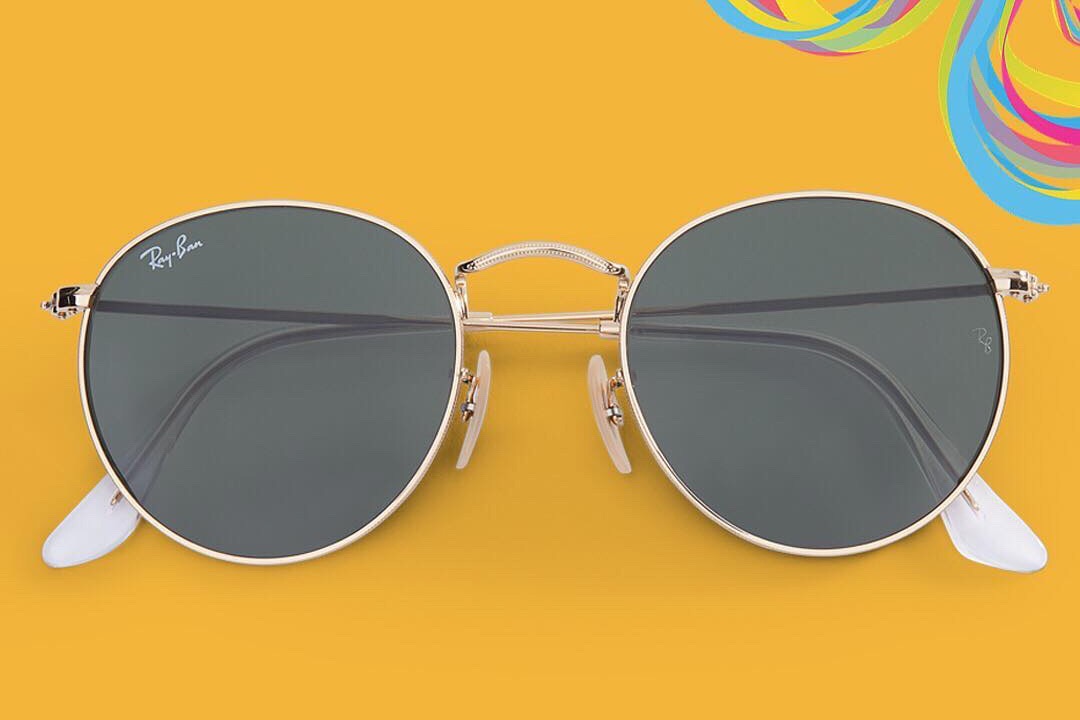
2011 saw the launch of Ray-Ban Light Ray, a new sunglass and prescription eyewear collection that expands the Tech Segment. Ray-Ban Light Ray prescription frames are constructed with a hypoallergenic, durable, flexible, and incredibly lightweight titanium alloy. Further, each pair of Ray-Ban Light Ray sunglasses comes with a kit of three interchangeable lenses for users to personalize the look of their glasses every day.
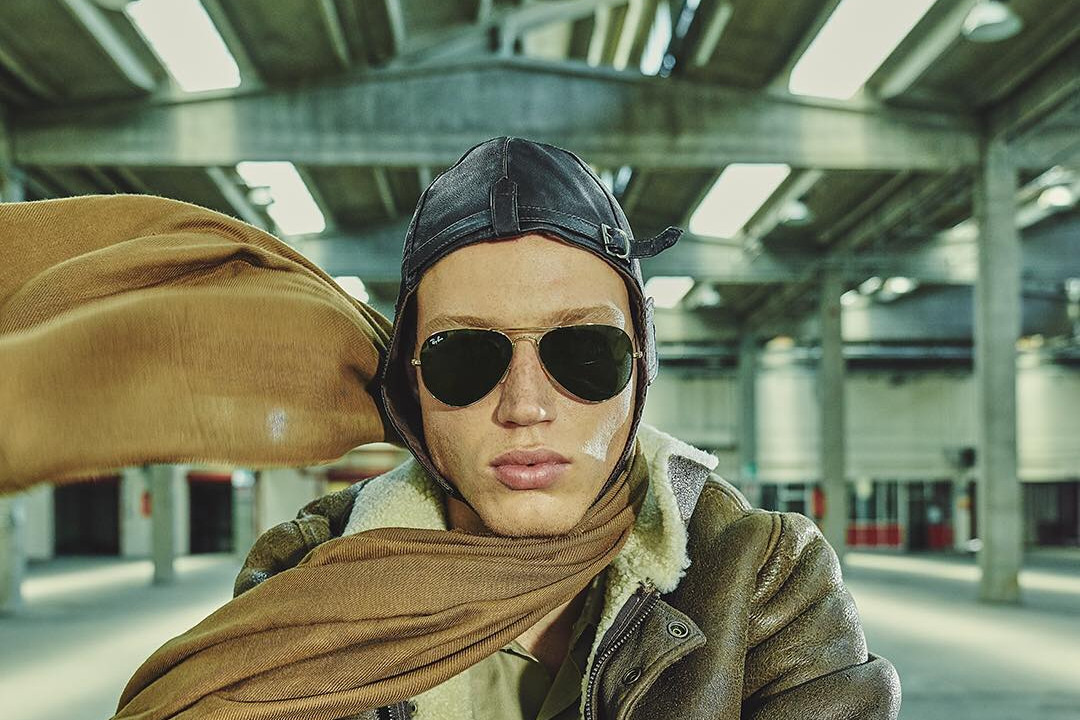
Ray-Ban has recently unveiled its most celebrated models reinterpreted with a modern take. Originally launched in the ’80s, the feminine Ray-Ban Cats 1000 were recently reintroduced with an elongated and rounded design in an array of bright and bold colors, including three different two-tone variations and a smoky lens. The masculine Ray-Ban Cats 5000 received a similar update, including two-tone models of purple and white, gray and blue, and pink and black.

Ray-Ban continued to update the classics in 2011 by re-introducing three lens colors from the 1960s - pink, blue and green - for the Ray-Ban Round, Meteor and Laramie models. The following year, Ray-Ban introduced twenty new gradient lens colors, including a number of bi-gradient color combinations.
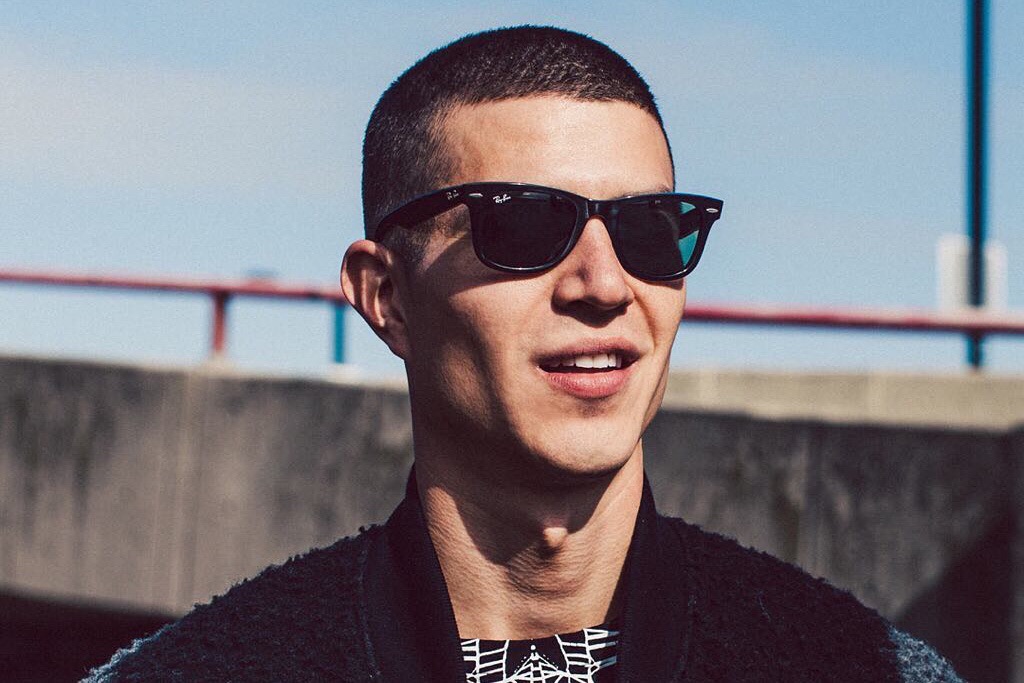
On March 21st, 2011 thousands of Ray-Ban fans gathered in prime locations around the globe -Shanghai, Delhi, Istanbul, Rome, Berlin, Paris, Barcelona, London, New York, Austin, Rio de Janeiro and Cancun - to celebrate a groundbreaking evolution of the NEVER HIDE campaign.

As one of the leading digital events to date, visitors were photographed and streamed live at Ray-Ban.com while performing at the NEVER HIDE event locations worldwide. As an integrated approach, fans could also share their photos with friends at Ray-Ban.com and on Ray-Ban social network fan pages, reaching over 10 million Facebook users through feeds of Ray-Ban posts.
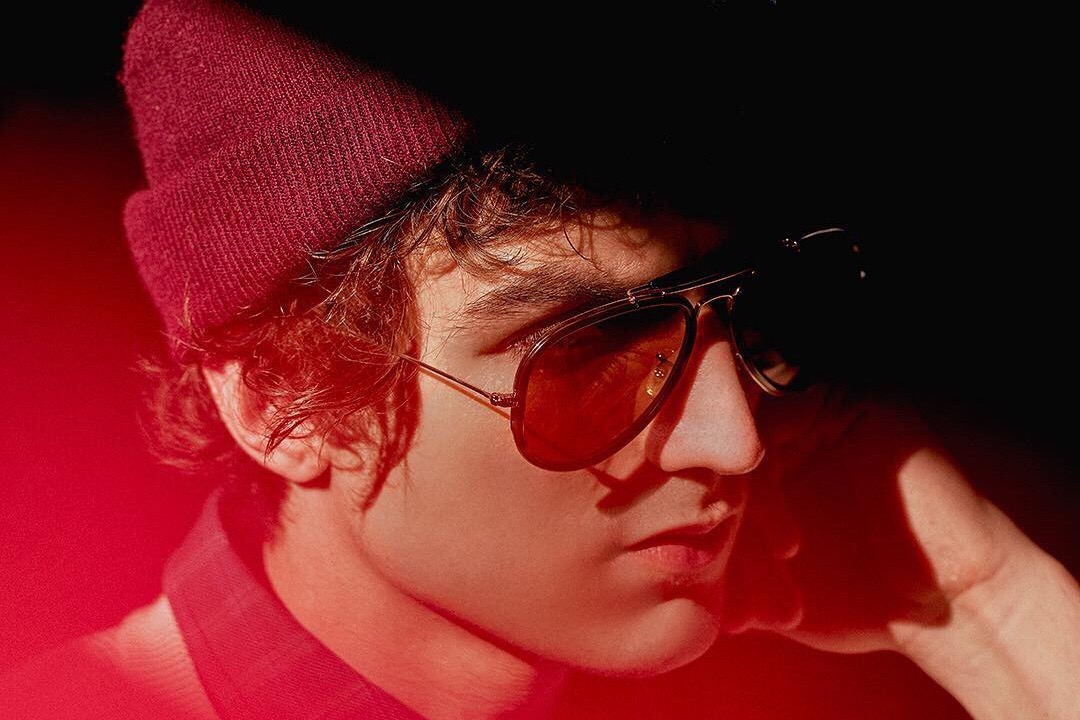
2011 also saw musicians mobilize for Ray-Ban: Johnny Marr, guitarist for legendary indie rockers The Smiths, developed five diverse elements challenging five up-and-coming rock acts - Au Revoir Simone, Best Coast, Carsick Cars, Mona and Tom Vek - to write their own track using those as inspiration. In addition, Marr inspired and helped design his own model, Ray-Ban Johnny Marr’s Limited Edition: 1,500 numbered gunmetal Signet with light blue lenses signed “Johnny” on the temple tip.
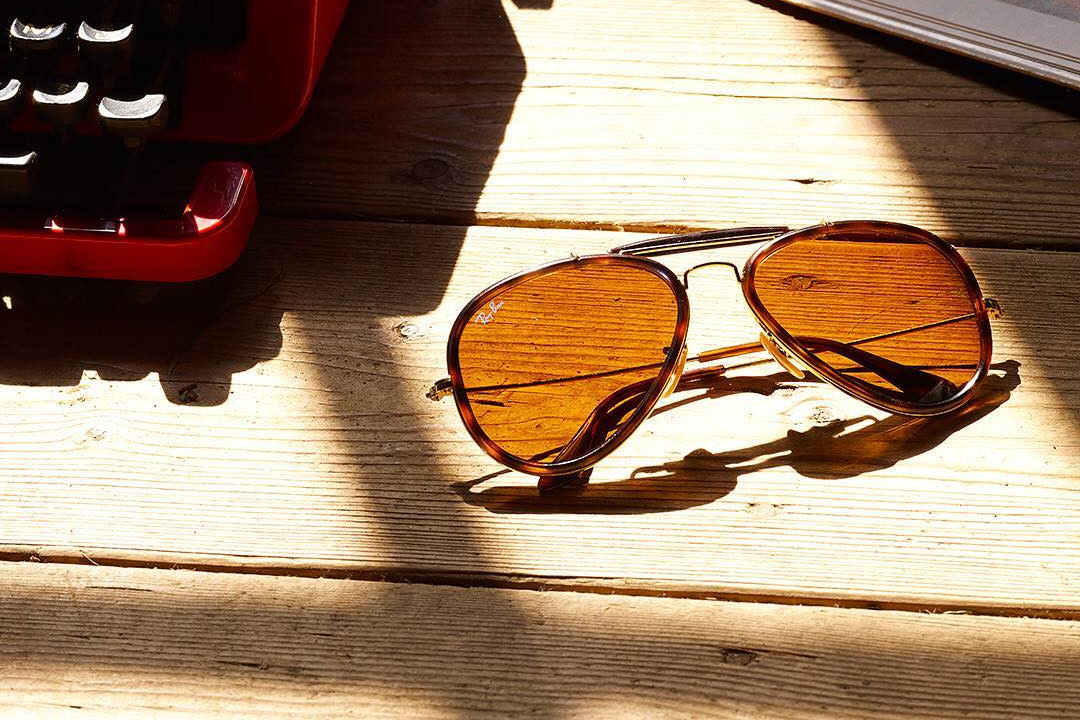
While style and a connection to culture are key to Ray-Ban’s success, technology has always driven the brand. The origin of Ray-Ban lies in a technological response to a challenge facing pilots over 75 years ago and Ray-Ban continues in 2012 to embrace technology as it develops new models for the future. The most recent technological advance for Ray-Ban is the incorporation of LiteForce, a cutting-edge material (thermoplastic) that has provided solutions for the automobile, aerospace, electronics, and medical industries. Applied to the iconic Ray-Ban Aviator model, LiteForce offers the same strength as a traditional frame and even greater flexibility. Strength and flexibility will continue to underpin Ray-Ban for the next 75 years.

In 2012, Ray-Ban celebrates its heritage with its “Legends” Communication Campaign, featuring a profile of a real person from every decade of Ray-Ban’s existence, and the campaign image they inspired. Seven shots illustrate seven decades from the 1930’s to today, showing how Ray-Ban has always been at the forefront of cultural change, inspiring those who share its ethos to NEVER HIDE.
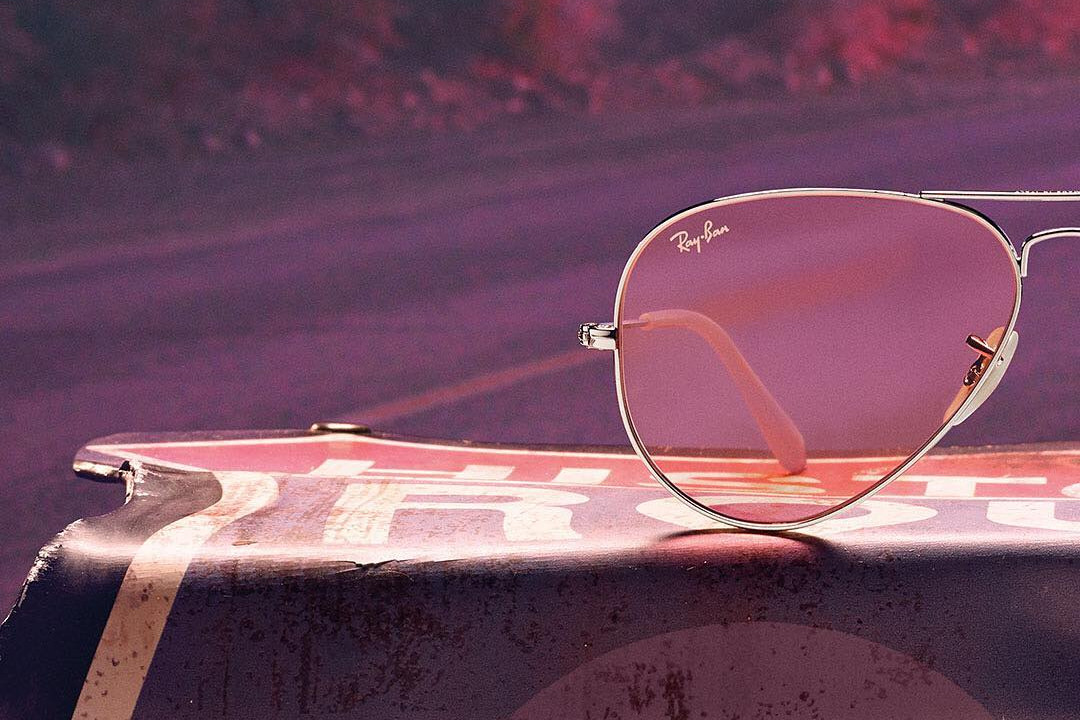
Ray-Ban will also celebrate its 75th anniversary with a limited edition book of rare iconic images pulled from the worlds of music, film, style, and popular culture, all put into context by leading cultural commentators. In addition, the Ray-Ban Ambermatic 2012 Limited Edition will reinterpret four classic Ray-Ban Aviator styles with the legendary 1978 photochromic lens.
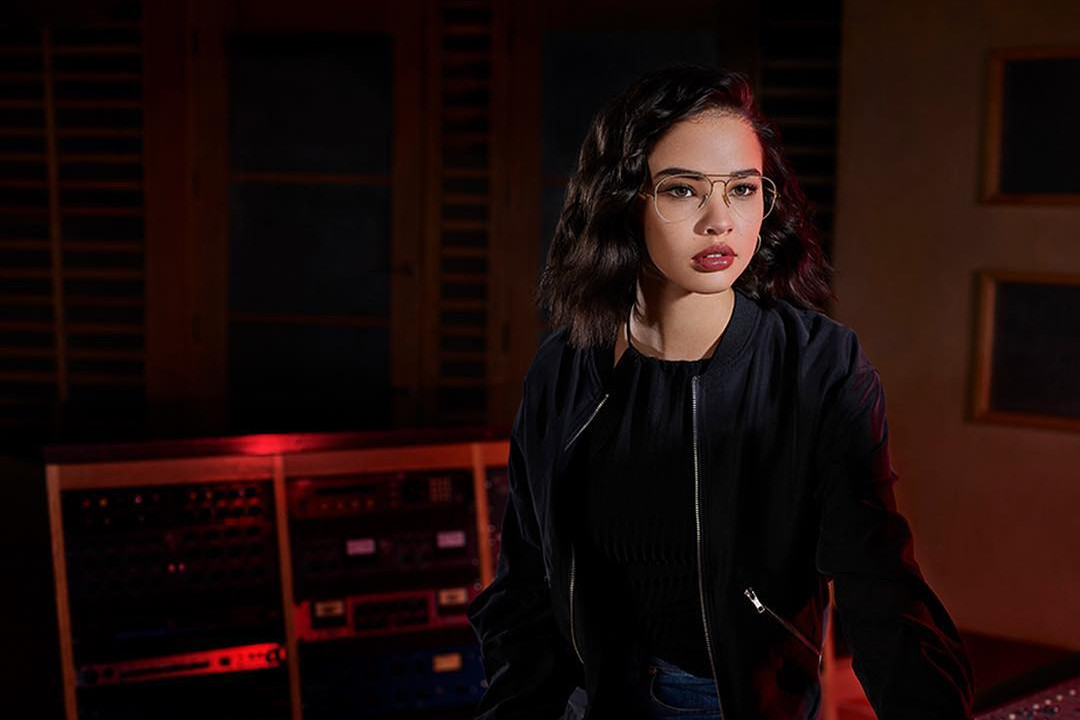
Through every decade of its existence, Ray-Ban has shaped popular culture. Never just a transient trend, Ray-Ban eyewear marks out the wearer as an individual of taste and discernment. And now, 75 years after the first pairs of Ray-Ban Aviator helped US pilots reach new heights, Ray-Ban remains an enduring classic.

Products Ray-Ban
Ray-Ban
Never Hide

Ray-Ban - The History of The Top-Selling Eyewear Brand Worldwide

Throughout its seven-and-a-half decades, Ray-Ban has been instrumental in pushing boundaries in music and the arts, forging the rise of celebrity culture, and creating the power of the rock and movie stars to influence fashion. From James Dean to Audrey Hepburn to Michael Jackson, Ray-Ban has proven indispensable for cultural icons who don’t want to be seen - but definitely want to be noticed. Ray-Ban has left an indelible mark on culture history.

Anni ‘30 - All About Aviation

As new airplanes allowed people to fly higher and farther, many US Air Force pilots were reporting that the glare from the sun was giving them headaches and altitude sickness. A new kind of glasses was introduced with green lenses that could cut out the glare without obscuring vision, and the Ray-Ban brand was born.

This new anti-glare eyewear went on sale to the public in 1937. The original glasses featured a plastic frame with the now classic Aviator shape. The sunglasses were remodeled with a metal frame the following year and rebranded as the Ray-Ban Aviator.

It wasn’t long before the popularity of Ray-Ban spread from pilots to anyone with an outdoor lifestyle. In 1938, the Ray-Ban Shooter was launched in both the green lens and the pale yellow Kalichrome lens, which sharpens detail and minimizes haze by filtering out blue light, making it ideal for misty conditions. The “cigarette-holder” middle circle, designed to free the hands of the shooter, is the signature of this icon.

Ray-Ban continued to expand its catalog - and customer base - with the launch of the Ray-Ban Outdoorsman model the following year. Originally called “Skeet Glass” and designed for specific groups such as hunting, shooting and fishing enthusiasts, the top bar and temple end pieces have been covered through years with different materials, including nacre and calf leather.

Anni ‘40 - Aviation and More

World War II saw American Air Force pilots continue to rely on Ray-Ban. Research and development resulted in innovations such as the gradient mirror lens, which featured a special coating on the upper part of the lens for enhanced protection, but an uncoated lower lens for a clear view of the plane’s instrument panel. Though designed for military use, these products and innovations resonated with civilians who wanted to enjoy the same high-performance tools the pros were using.

Military influence on fashion was undeniable: Army and Navy regulation t-shirts were a staple of 1940s fashion, and civilians eager to emulate pilots sported cool new sunglasses. Ray-Ban had jumped decisively from military function to pop culture fashion—without losing any of their trademark effectiveness.

Anni ‘50 - Hollywood Glam

In the wake of WWII, Hollywood was having an increasingly powerful impact on what people wore. The Ray-Ban Wayfarer model was launched in 1952, and once they had been seen on screen legends such as James Dean in 1955’s Rebel Without a Cause and later on Audrey Hepburn in 1961’s Breakfast at Tiffany’s, Ray-Ban Wayfarer became one of the most instantly recognizable fashion accessories ever.

All the while, Ray-Ban continued to innovate. Introduced in 1953, Ray-Ban Signet sunglasses feature an eye catching gold or silver frame with horizontal bands at the nose bridge, front corners, and ear stems. The original Ray-Ban Signet would spawn multiple updates, including the 2011 Ray-Ban Johnny Marr’s Limited Edition customized by the guitarist for the legendary British indie rock band The Smiths.

Further innovations of the 1950s included the G-15 gray lens (1953) - a neutral gray lens giving true color vision and exceptionally comfortable protection even in most dazzling glare - and a fourth metal frame style, the Ray-Ban Caravan (1957), a squarer version of the Ray-Ban Aviator later worn by Robert De Niro in 1976’s Taxi Driver. A dedicated women’s range was introduced in 1958, including frames in different colors with decorative flourishes that kept pace with contemporary fashion.

Anni ‘60 - Revolution and Change

Embracing the 1960s zeitgeist of change and revolution, Ray-Ban adapted right along with the changing times. From roughly thirty models at the beginning of the decade, the catalog had expanded to fifty by 1969, including styles for men, women and children.

Ray-Ban had become the world’s leader in eyewear through its reputation for style and quality, from the glasses themselves to the specially made leather and vinyl cases that protected them when not in use.

Ray-Ban continued to create new styles and Hollywood stars continued to wear them. The Ray-Ban Olympian I and II were introduced in 1965 and worn by Peter Fonda in Easy Rider in 1969. The frames feature a gently curving metal bridge and rounded rectangle lenses, reinterpreting a classic with a sleek and elegant twist.

Ray-Ban Balorama sunglasses emerged in 1968 and were famously worn by Clint Eastwood in Dirty Harry in 1971. Meanwhile, Bob Dylan was rarely seen without his Ray-Ban Wayfarer, the dark lenses adding to his enigmatic non-conformist appeal.

Additional 1960s debuts were the angular, masculine Ray-Ban Meteor and the cat eye-shaped Ray-Ban Laramie.

Anni ‘70 - Sporting Chance

Disco was king in the 1970s, and disco meant dressing to impress, which often included cool shades-even indoors. By now the eyewear market was becoming more sophisticated and had developed in two distinct directions: sportswear necessity and fashion accessory.

Ray-Ban launched two models, the Ray-Ban Vagabond and Ray-Ban Stateside, each with plastic frames and two types of lenses: the G-31 mirror lens and the standard G-15 lens. Re-introduced in 2010, the Ray-Ban Vagabond was updated with slightly teardrop-shaped lenses for a cool, retro look.

The 1970s saw further product expansion and technical innovation: mountaineering glasses with mirrored lenses and leather side shields were developed to reflect glare and protect the eyes from sun and wind.

Ray-Ban expanded its offerings to include prescription eyewear as well as sunglasses. In 1974, the photochromic Ambermatic lens was introduced, able to change color depending on light conditions. The Ambermatic highlighted outlines and shapes, even on snow, and darkened especially intense light, making it particularly good for winter sports.

Anni ‘80 - Stage and Screen

In the decade of arcade games, MTV, and the Brat Pack, Ray-Ban was one of the must-have brands. In the movies, there were leading roles for Ray-Ban Wayfarer in The Blues Brothers (1980) and Risky Business (1983). Top Gun (1986) took Ray-Ban Aviator back to their fighter pilot roots, boosting sales of the Ray-Ban original.

Michael Jackson established his signature look when he showed up at the 1984 Grammys in a pair of Ray-Ban Aviator. But it was Ray-Ban Wayfarer he chose for his epic Bad tour , which ran from 1987-89 and became the highest-attended tour in history.

Anni ‘90 - A New Era for Ray-Ban

Ray-Ban continued to be a movie favorite in the 1990s: the Ray-Ban Clubmaster was worn by Denzel Washington in Malcolm X (1992) and Tim Roth in Reservoir Dogs (1992). 1997 saw Will Smith and Tommy Lee Jones wearing Ray-Ban Predator in Men in Black while Johnny Depp wore a pair of Ray-Ban Shooter in 1998’s Fear and Loathing in Las Vegas.

In 1999 Luxottica Group acquired the Bausch & Lomb frames business, including the brands Ray-Ban, Arnette, Killer-Loop Eyewear and REVO.

Anni 2000 - Culture and Communication

Major expansion of the Ray-Ban brand in 2003 included Ray-Ban Optical for prescription lenses and Ray-Ban Junior for children. Ray-Ban Optical draws on the brand’s pop culture heritage and meticulous craftsmanship to create contemporary eyewear infused with Ray-Ban lifestyle and quality. The first sunglass collection dedicated exclusively to kids aged 8 to 12 years, Ray-Ban Junior focuses on maximum eye protection while providing stylish, comfortable frames. In 2005, Ray-Ban Junior expanded to include models made entirely from titanium for a hypoallergenic and lightweight yet sturdy option.

In 2006 came a complete overhaul of the Ray-Ban Wayfarer. Music photographer Mick Rock was commissioned to create a new series of photos, Ray-Ban Uncut: the Wayfarer Session, with indie rock music luminaries such as Peaches, James Murphy of LCD Soundsystem, Bobby Gillespie of Primal Scream and Johnny Marr of The Smiths reinterpreting the updated eyewear classic.

In 2007 Ray-Ban launched the NEVER HIDE campaign, an innovative global media plan highlighting Ray-Ban’s unique ability to place the Ray-Ban wearer at the center of attention with a timeless cool statement.

NEVER HIDE kicked off with an interactive project in NYC’s Times Square featuring 12 screens displaying images submitted by Ray-Ban wearers who wanted to express themselves honestly and spontaneously at “the crossroads of the world.” The images were then displayed in a gallery on Ray-Ban.com so that the NEVER HIDE experience would continue worldwide, showcasing Ray-Ban’s ability to celebrate the individual and the movement.

Ray-Ban Remasters was launched in 2008, an ongoing series of multimedia collaborations. The first project featured eight international musical acts, including The Kills, Black Kids, Ladyhawke, Ipso Facto and Paolo Nutini. Each recorded a cover of a song of their choice from the 1950s and 1960s - the decades that inspired the Ray-Ban Clubmaster - and performed it live at gigs in New York, Beijing and Milan.

Ray-Ban re-works its most iconic models in an explosion of fresh color for 2009 with Never Hide Colorize Communication Campaign. Ray-Ban Wayfarer Colorize Kit allowed fans to create their own unique pair of shades. The kit contained a pair of white Ray-Ban Wayfarer along with stencils and five markers specially designed for coloring the surface of the frames.

Additional recent Ray-Ban Wayfarer updates include models featuring designs printed on the interior of the frames, such as the NYC subway map and striking floral and striped patterns. The color palette is extended with Ray-Ban Rare Prints series features trends in pop culture, cinema, and advertising, and is available in two themes: “Comics” and “Button Pins.”

Ray-Ban re-affirms its leadership in innovation and technology by giving birth to a new segment within the collection. The Ray-Ban Tech Carbon Fiber Collection incorporates the extraordinarily sturdy yet extremely lightweight quality of carbon fiber.

The collection features wraparound temples composed of seven carbon fiber layers, resulting in extremely lightweight, flexible, and exceptionally durable frames. The P3 (polycarbonate) and P3PLUS (crystal) lenses guarantee exceptional polarization and more vivid and high-definition colors. An anti-reflective coating is also applied to eliminate glare and provide full protection from harmful UV rays.

Anni 2010 - Updates, Advances and Celebrating 75 Years

In 2010, it was the Ray-Ban Aviator’s turn back in the spotlight. Renowned rock photographer Kevin Cummins shot music icons past and present - including The Virgins, The Big Pink, We Are Scientists and Iggy Pop - wearing various models from within the Ray-Ban Aviator family.

2011 saw the launch of Ray-Ban Light Ray, a new sunglass and prescription eyewear collection that expands the Tech Segment. Ray-Ban Light Ray prescription frames are constructed with a hypoallergenic, durable, flexible, and incredibly lightweight titanium alloy. Further, each pair of Ray-Ban Light Ray sunglasses comes with a kit of three interchangeable lenses for users to personalize the look of their glasses every day.

Ray-Ban has recently unveiled its most celebrated models reinterpreted with a modern take. Originally launched in the ’80s, the feminine Ray-Ban Cats 1000 were recently reintroduced with an elongated and rounded design in an array of bright and bold colors, including three different two-tone variations and a smoky lens. The masculine Ray-Ban Cats 5000 received a similar update, including two-tone models of purple and white, gray and blue, and pink and black.

Ray-Ban continued to update the classics in 2011 by re-introducing three lens colors from the 1960s - pink, blue and green - for the Ray-Ban Round, Meteor and Laramie models. The following year, Ray-Ban introduced twenty new gradient lens colors, including a number of bi-gradient color combinations.

On March 21st, 2011 thousands of Ray-Ban fans gathered in prime locations around the globe -Shanghai, Delhi, Istanbul, Rome, Berlin, Paris, Barcelona, London, New York, Austin, Rio de Janeiro and Cancun - to celebrate a groundbreaking evolution of the NEVER HIDE campaign.

As one of the leading digital events to date, visitors were photographed and streamed live at Ray-Ban.com while performing at the NEVER HIDE event locations worldwide. As an integrated approach, fans could also share their photos with friends at Ray-Ban.com and on Ray-Ban social network fan pages, reaching over 10 million Facebook users through feeds of Ray-Ban posts.

2011 also saw musicians mobilize for Ray-Ban: Johnny Marr, guitarist for legendary indie rockers The Smiths, developed five diverse elements challenging five up-and-coming rock acts - Au Revoir Simone, Best Coast, Carsick Cars, Mona and Tom Vek - to write their own track using those as inspiration. In addition, Marr inspired and helped design his own model, Ray-Ban Johnny Marr’s Limited Edition: 1,500 numbered gunmetal Signet with light blue lenses signed “Johnny” on the temple tip.

While style and a connection to culture are key to Ray-Ban’s success, technology has always driven the brand. The origin of Ray-Ban lies in a technological response to a challenge facing pilots over 75 years ago and Ray-Ban continues in 2012 to embrace technology as it develops new models for the future. The most recent technological advance for Ray-Ban is the incorporation of LiteForce, a cutting-edge material (thermoplastic) that has provided solutions for the automobile, aerospace, electronics, and medical industries. Applied to the iconic Ray-Ban Aviator model, LiteForce offers the same strength as a traditional frame and even greater flexibility. Strength and flexibility will continue to underpin Ray-Ban for the next 75 years.

In 2012, Ray-Ban celebrates its heritage with its “Legends” Communication Campaign, featuring a profile of a real person from every decade of Ray-Ban’s existence, and the campaign image they inspired. Seven shots illustrate seven decades from the 1930’s to today, showing how Ray-Ban has always been at the forefront of cultural change, inspiring those who share its ethos to NEVER HIDE.

Ray-Ban will also celebrate its 75th anniversary with a limited edition book of rare iconic images pulled from the worlds of music, film, style, and popular culture, all put into context by leading cultural commentators. In addition, the Ray-Ban Ambermatic 2012 Limited Edition will reinterpret four classic Ray-Ban Aviator styles with the legendary 1978 photochromic lens.

Through every decade of its existence, Ray-Ban has shaped popular culture. Never just a transient trend, Ray-Ban eyewear marks out the wearer as an individual of taste and discernment. And now, 75 years after the first pairs of Ray-Ban Aviator helped US pilots reach new heights, Ray-Ban remains an enduring classic.

Products Ray-Ban
-
Ray-Ban - RW4005 656013 51-20 - Ray-Ban Stories Meteor - Shiny Brown -...
Originally created in the 60s as an angular interpretation of the classic Wayfarer, Meteor has evolved into a post-modern icon in its own right. Featuring distinct square wings and a bold bridge, it carves a unique shape in the crowd. And now, with the integration of Meta technology, Ray-Ban Stories Meteor has extra edge.
279,65 € 329,00 € -15%Reduced price ! -
Ray-Ban - RW4003 656013 48-23 - Ray-Ban Stories Round - Brown - Brown...
Long worn by celebrated thinkers and dreamers, Round is a symbol of new ideas and courageous self-expression. Now integrated with Meta technology, Ray-Ban Stories Round takes this pioneering spirit to the next level. The iconic frame has been reborn as wearable tech designed to keep you connected to your social community and the world around you.
279,65 € 329,00 € -15%Reduced price ! -
Ray-Ban - RW4003 601/71 48-23 - Ray-Ban Stories Round - Shiny Black - Green...
Long worn by celebrated thinkers and dreamers, Round is a symbol of new ideas and courageous self-expression. Now integrated with Meta technology, Ray-Ban Stories Round takes this pioneering spirit to the next level. The iconic frame has been reborn as wearable tech designed to keep you connected to your social community and the world around you.
279,65 € 329,00 € -15%Reduced price ! -
Ray-Ban - RW4003 65582V 48-23 - Ray-Ban Stories Round - Blue - Dark Blue...
Long worn by celebrated thinkers and dreamers, Round is a symbol of new ideas and courageous self-expression. Now integrated with Meta technology, Ray-Ban Stories Round takes this pioneering spirit to the next level. The iconic frame has been reborn as wearable tech designed to keep you connected to your social community and the world around you.
305,15 € 359,00 € -15%Reduced price ! -
Ray-Ban - RW4003 601/M4 48-23 - Ray-Ban Stories Round - Shiny Black -...
Long worn by celebrated thinkers and dreamers, Round is a symbol of new ideas and courageous self-expression. Now integrated with Meta technology, Ray-Ban Stories Round takes this pioneering spirit to the next level. The iconic frame has been reborn as wearable tech designed to keep you connected to your social community and the world around you.
347,65 € 409,00 € -15%Reduced price ! -
Ray-Ban - RW4003 6563M3 48-23 - Ray-Ban Stories Round - Olive Green - G-15...
Long worn by celebrated thinkers and dreamers, Round is a symbol of new ideas and courageous self-expression. Now integrated with Meta technology, Ray-Ban Stories Round takes this pioneering spirit to the next level. The iconic frame has been reborn as wearable tech designed to keep you connected to your social community and the world around you.
347,65 € 409,00 € -15%Reduced price ! -
Ray-Ban - RW4003 601/SB 48-23 - Ray-Ban Stories Round - Black - Clear Blue...
Long worn by celebrated thinkers and dreamers, Round is a symbol of new ideas and courageous self-expression. Now integrated with Meta technology, Ray-Ban Stories Round takes this pioneering spirit to the next level. The iconic frame has been reborn as wearable tech designed to keep you connected to your social community and the world around you.
279,65 € 329,00 € -15%Reduced price ! -
Ray-Ban - RW4003 601/M3 48-23 - Ray-Ban Stories Round - Shiny Black - Clear...
Long worn by celebrated thinkers and dreamers, Round is a symbol of new ideas and courageous self-expression. Now integrated with Meta technology, Ray-Ban Stories Round takes this pioneering spirit to the next level. The iconic frame has been reborn as wearable tech designed to keep you connected to your social community and the world around you.
347,65 € 409,00 € -15%Reduced price ! -
Ray-Ban - RW4002 601/71 50-22 - Ray-Ban Stories Wayfarer - Shiny Black -...
From the rock revolution of the ‘60s, to the art scene of the ‘80s, to the forefront of hip-hop culture – Wayfarer has become an enduring icon across endlessly shifting horizons. Now the journey continues with the latest in wearable tech. Ray-Ban Stories Wayfarer integrates the best of your phone with the timeless frame, bringing you a new way to capture...
279,65 € 329,00 € -15%Reduced price ! -
Ray-Ban - RW4002 65582V 50-22 - Ray-Ban Stories Wayfarer - Shiny Blue - Dark...
From the rock revolution of the ‘60s, to the art scene of the ‘80s, to the forefront of hip-hop culture – Wayfarer has become an enduring icon across endlessly shifting horizons. Now the journey continues with the latest in wearable tech. Ray-Ban Stories Wayfarer integrates the best of your phone with the timeless frame, bringing you a new way to capture...
305,15 € 359,00 € -15%Reduced price ! -
Ray-Ban - RW4002 65582V 50-22 - Ray-Ban Stories Wayfarer - Shiny Black -...
From the rock revolution of the ‘60s, to the art scene of the ‘80s, to the forefront of hip-hop culture – Wayfarer has become an enduring icon across endlessly shifting horizons. Now the journey continues with the latest in wearable tech. Ray-Ban Stories Wayfarer integrates the best of your phone with the timeless frame, bringing you a new way to capture...
347,65 € 409,00 € -15%Reduced price ! -
Ray-Ban - RW4002 65582V 50-22 - Ray-Ban Stories Wayfarer - Shiny Brown -...
From the rock revolution of the ‘60s, to the art scene of the ‘80s, to the forefront of hip-hop culture – Wayfarer has become an enduring icon across endlessly shifting horizons. Now the journey continues with the latest in wearable tech. Ray-Ban Stories Wayfarer integrates the best of your phone with the timeless frame, bringing you a new way to capture...
279,65 € 329,00 € -15%Reduced price ! -
Ray-Ban - RW4002 601S87 50-22 - Ray-Ban Stories Wayfarer - Matte Black - Dark...
From the rock revolution of the ‘60s, to the art scene of the ‘80s, to the forefront of hip-hop culture – Wayfarer has become an enduring icon across endlessly shifting horizons. Now the journey continues with the latest in wearable tech. Ray-Ban Stories Wayfarer integrates the best of your phone with the timeless frame, bringing you a new way to capture...
279,65 € 329,00 € -15%Reduced price ! -
Ray-Ban - RW4002 601/SB 50-22 - Ray-Ban Stories Wayfarer - Black - Clear Blue...
From the rock revolution of the ‘60s, to the art scene of the ‘80s, to the forefront of hip-hop culture – Wayfarer has become an enduring icon across endlessly shifting horizons. Now the journey continues with the latest in wearable tech. Ray-Ban Stories Wayfarer integrates the best of your phone with the timeless frame, bringing you a new way to capture...
279,65 € 329,00 € -15%Reduced price ! -
Ray-Ban - RW4002 601SM3 50-22 - Ray-Ban Stories Wayfarer - Matte Black -...
From the rock revolution of the ‘60s, to the art scene of the ‘80s, to the forefront of hip-hop culture – Wayfarer has become an enduring icon across endlessly shifting horizons. Now the journey continues with the latest in wearable tech. Ray-Ban Stories Wayfarer integrates the best of your phone with the timeless frame, bringing you a new way to capture...
347,65 € 409,00 € -15%Reduced price ! -
Ray-Ban - RW4002 6563M3 50-22 - Ray-Ban Stories Wayfarer - Olive Green - G-15...
From the rock revolution of the ‘60s, to the art scene of the ‘80s, to the forefront of hip-hop culture – Wayfarer has become an enduring icon across endlessly shifting horizons. Now the journey continues with the latest in wearable tech. Ray-Ban Stories Wayfarer integrates the best of your phone with the timeless frame, bringing you a new way to capture...
347,65 € 409,00 € -15%Reduced price ! -
Ray-Ban - RW4002 601/T3 50-22 - Ray-Ban Stories Wayfarer - Shiny Black -...
From the rock revolution of the ‘60s, to the art scene of the ‘80s, to the forefront of hip-hop culture – Wayfarer has become an enduring icon across endlessly shifting horizons. Now the journey continues with the latest in wearable tech. Ray-Ban Stories Wayfarer integrates the best of your phone with the timeless frame, bringing you a new way to capture...
305,15 € 359,00 € -15%Reduced price ! -
Ray-Ban - RW4002 656083 50-22 - Ray-Ban Stories Wayfarer - Shiny Brown -...
From the rock revolution of the ‘60s, to the art scene of the ‘80s, to the forefront of hip-hop culture – Wayfarer has become an enduring icon across endlessly shifting horizons. Now the journey continues with the latest in wearable tech. Ray-Ban Stories Wayfarer integrates the best of your phone with the timeless frame, bringing you a new way to capture...
305,15 € 359,00 € -15%Reduced price ! -
Ray-Ban - RW4005 6563M3 51-20 - Ray-Ban Stories Meteor - Olive Green - G-15...
Originally created in the 60s as an angular interpretation of the classic Wayfarer, Meteor has evolved into a post-modern icon in its own right. Featuring distinct square wings and a bold bridge, it carves a unique shape in the crowd. And now, with the integration of Meta technology, Ray-Ban Stories Meteor has extra edge.
347,65 € 409,00 € -15%Reduced price ! -
Ray-Ban - RW4005 65582V 51-20 - Ray-Ban Stories Meteor - Blue - Dark Blue...
Originally created in the 60s as an angular interpretation of the classic Wayfarer, Meteor has evolved into a post-modern icon in its own right. Featuring distinct square wings and a bold bridge, it carves a unique shape in the crowd. And now, with the integration of Meta technology, Ray-Ban Stories Meteor has extra edge.
305,15 € 359,00 € -15%Reduced price ! -
Ray-Ban - RW4005 601/71 51-20 - Ray-Ban Stories Meteor - Shiny Black - Green...
Originally created in the 60s as an angular interpretation of the classic Wayfarer, Meteor has evolved into a post-modern icon in its own right. Featuring distinct square wings and a bold bridge, it carves a unique shape in the crowd. And now, with the integration of Meta technology, Ray-Ban Stories Meteor has extra edge.
279,65 € 329,00 € -15%Reduced price !



